News
- Details
- Written by: Isabella Foster
- Category: Perth Activities and Events
Whilst it can be tempting to rush home and into bed as fast as possible on Perth’s gloomy wintry days, the cooler months are the perfect time of year to explore our bustling city, just without the bustle!
Perth comes alive in winter, from film and art festivals to pop-up bars and ice skating in the city centre, there is never a shortage of new things to try. Here is a list of activities that we are sure will keep your body temperature up this winter.
Ice-skating at Elizabeth Quay
It’s back by popular demand for the third year in a row! From 28 June to 21 July, Perth’s pop-up skating rink is open to people of any skill level and is conveniently located in the city centre at Elizabeth Quay. With world-class entertainment, music performances, rides and food trucks, there is no better way to spend your winter nights than on the ice.

It can get pretty busy so we recommend buying tickets online to secure your spot.
Explore Northbridge
Rug up in your best scarf and coat and get ready to explore the kaleidoscope of food, arts and nightlife in Northbridge. Commonly referred to as the ‘cultural hub’ of Perth, Northbridge is bursting with things to eat, drink and watch. We recommend checking out Lucky Chan’s Laundry + Noodle Bar, where their spicy bowls of soup are sure to keep you warm on a cold night.
Northbridge is highly accessible with Perth busport and train stations nearby. Take a look at their menu.
Explore the ocean with AQWA
Winter isn’t great beach weather, however, we can do you one better. At the Aquarium of Western Australia (AQWA), you are able to get up close and personal with the beautiful marine species of Western Australia. With exclusive adults-only evening events, one of the world’s largest living coral reef exhibits and a 98 meter long moving walkway, plan your next day trip to this oceanic marvel.
Find out more and book tickets.
Experience the theatre at the State Theatre Centre of Western Australia
Housing the Heath Ledger Theatre, this 575 capacity building is a defining architectural landmark in the city of Perth. The Centre is consistently busy hosting events ranging from theatre to dance and music performances that feature both local and global talent. With brand new world-class facilities, there is no better way to spend a special evening.
Check out their schedule and book tickets on their website.
Take your sporting skills indoors
The rain is no excuse to stop getting active this winter. Perth is home to an endless number of indoor games and activities. From mini golf and bowling to trampolining and rock climbing, there is something for everyone. We recommend checking out Holey Moley, Perth’s craziest and most unique mini golf venue. Test your skills against the infamous windmill and ‘shark infested’ waters.
Find out more today.
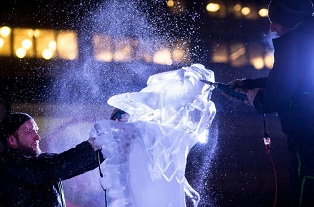
Embrace the cold at Winter Fest
The city is guaranteed to light up this year with Winter Fest. Running from 24 June to 21 July, this myriad of events will be heating up your social calendar. From incredible light showers, delicious comfort food, magicians and a pop-up cinema there is almost too much to choose from.
Check out the full list of happenings.
Fremantle Markets
One of the leading tourist destinations in WA, the Fremantle Markets is something you just can’t miss this winter. With an incredible of sights, smells and sounds to take in, there is something for everyone within the array of local talent the market showcases. Buy the latest piece of hand-made clothing or treat yourself to a piece of cake and coffee. Fremantle Markets is alive with culture and a great way to spend a winter weekend.
Go for a drive outside of the city
It takes less than an hour’s drive to escape the city and be amongst the rolling Perth hills. With beautiful stretches of road, valleys, trees and lookouts, a winters drive through the country is the perfect escape during a wintry weekend. With the recent rainfall, the city has endured, we recommend checking out Bells Rapids. This beautiful picnic and bushwalking spot is home to white water rapids which thrive during the winter season.
Find out all you need to make it a day trip.
Art gallery
Located in the heart of the Perth Cultural Centre, the Art Gallery of Western Australia is a peaceful and serene escape to the busy nature of the city. The Collection, associated programs and stimulating exhibitions offer Gallery visitors a unique and exciting experience of historic and contemporary Australian artists. The gallery is also in close proximity to a number of cafes to rest and enjoy lunch at.
Kings Park
One of the largest inner city parks in the world and visited by an astonishing 6 million people each year, Kings Park is an outstanding collection of Western Australian flora and an ideal place for picnics and walks. With stunning views of the city and surrounding areas, it’s ideal for a winter’s drive and a great spot to get your next Instagram photo of storm clouds rolling in.
- Details
- Written by: Quintus Potgieter
- Category: Education
The traditional engineering qualification is going through changes. Universities and technical vocational educational institutions are coming to grips with the changing nature of engineering. The world’s problems need solving, and they cannot be solved with one engineer from one discipline from one university anymore.
Some universities and institutions understand that, and are determined to bridge the gaps between engineering disciplines. Other universities do not seem to grasp the idea of changing educational offerings at all - and produce future-proof-less engineers.
With technology advancing at a rapid rate, universities are having to update their curricula with the most cutting edge research and technical information. What universities are wanting to do is instruct the prospective engineers in the kinds of knowledge that can help them help the world.
One subindustry engineering has produced is the assistive technologies industry. This is an industry that sees engineers developing technologies for disabled and elderly people in hopes that it might make their lives easier. The industry has heated up to such an extent that entire degrees are being compiled.

There are over one billion people living with a disability. Accessibility to technology is thus extremely important.
The universities that are meeting this challenge head on are the University College London (UCL), Loughborough University London and the London College of Fashion. They have just added the Master of Science in Disability, Design and Innovation to their offerings. It will be a multidisciplinary approach to creating assistive technologies. The curriculum is ready to go, with expert instructors ready to teach, at the Global Disability Innovation Hub (GDI) based at the Queen Elizabeth Olympic Park.
The GDI Hub is pumping £10 million that will see the Life Changing Assistive Technology For All programme reach over 3 million people.
Dr Catherine Holloway, Academic Director of the GDI Hub told Eureka Magazine:
“The global potential for disability innovation is huge. New technologies provide opportunities for scalability and access, but to accelerate this movement we need a new generation pioneers. The Disability, Design and Innovation Masters is the world’s first course in this rapidly growing area of expertise. Students will be taught in a uniquely multidisciplinary environment, learning from global experts, live research projects and high-profile global collaborations. We’re looking for exceptional students with the drive and determination to push the boundaries of this new area of study.”
The market is ripe for some innovation in the tech sector for the specific task of creating truly innovative technologies for the disabled and the elderly. As a result, engineering startup companies with budding engineering entrepreneurs have been developing to get them to the market.
Even big tech is getting in on the game. Google has gotten its engineers to develop a subtitling function to its new operating system Android Q. It will be very helpful to hard of hearing and fully deaf people when activated on the smartphone. The function named Live Caption can transcribe podcasts, videos, audio and even video chat on the fly, as it happens. It is accessible via one tap.
The MSc in Disability, Design and Innovation has modules on entrepreneurship, engineering skills and understanding of the global policy and societal contexts of disability. Consequently, the industry could see more software and hardware entering the world that will positively assist those with disabilities.
Works Cited
“Google's Impressive Live Caption Will Add Subtitles to Any Audio on Your Phone.” Android Authority, 7 May 2019, www.androidauthority.com/google-live-caption-983562/.
Ucl. “Disability, Design and Innovation MSc.” UCL Graduate Degrees, 11 Feb. 2019, www.ucl.ac.uk/prospective-students/graduate/taught-degrees/disability-design-innovation-msc.
- Details
- Written by: Quintus Potgieter
- Category: Industry
The offshore oil and gas industry is an industry well known for its high risk nature. Not only are the employees who work on the rigs putting their lives in danger, but so are the employees who work under it. These employees are the oil rigs’ deep sea saturation divers. They have one of the most dangerous jobs in the world, walking on the bottom of the ocean floor.
Deep sea diving operations are important to offshore oil and gas operations around the world. Engineers need them for oil well checks and changes, installation of new wells and decommissioning of old ones.
Humans are utilized when diving up to depths of 200 meters. For anything past those points, specially engineered vehicles are required. These divers are subjected to ten times the atmospheric pressure humans experience every day.
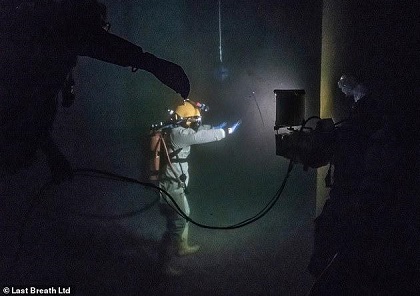
The dive support vessels are built around a pressurized saturation system. On the vessel itself, specialized living chambers are set up for the divers to sleep in. The vessel houses smaller vessels called “Bells’ that take the divers down to the seabed. Divers are lowered into the sea, tethered to the ship above. The divers essentially live underneath the ocean for 28 days.
When living on the Bell, divers breathe a helium-oxygen mixture (named Heliox) to prevent nitrogen narcosis, which makes the crew’s voices go high pitched just like the effects of breathing in air from a helium balloon. The divers say living underneath the ocean is just like living on the International Space Station, just under water.
A computer system is run in a mode named Dynamic Positioning mode that locks the vessel over the exact point on the seabed. They then lower the Bell down from the ship in the exact location and the engineers dive from the Bell into the ocean.
Engineers facilitate the functioning of all the important on-board computers. A Dive Supporter, who sits within the vessel atop the sea, also monitors all of the divers in real-time underneath the ocean. Cameras track their every move.
Inside the Bell, there is a man who does not dive down, but rather regulates the gases of the divers and the feeding of the ‘umbilical cord’ that tethers the divers to the Bell under the ocean. The umbilical cord feeds hot water into the diving suit to keep the diver warm, and provides gas to breath - while being the physical tether to the boat.
Last Breath
Saturation diving has become the subject of a new BBC documentary that has made its way to Netflix named ‘Last Breath’. It follows the true story Chris Lemons, a saturation diver who was deployed to the middle of the North Sea to dive down and perform some changes to an oil well there. In September of 2012, the dive support vessel Lemons was on was traversing the North Sea Oil Fields, 127 miles east of Aberdeen.
On the 18th of September 2012, Lemons was at the bottom of the North Sea, but little did he know that a storm was brewing above the water. The storm was so powerful that it knocked out and overrode the GPS systems on the vessel, leaving it to float away from the location the divers were doing their maintenance at. It resulted in Chris Lemons’ umbilical cord being severed. He only had five minutes of oxygen left in a reserve tank on his back.
The crew was unable to get the vessel under control and find Lemons as the storm threw the ship off course. Once they had managed to get the ship’s automated control systems rebooted it returned to its previous GPS locations, however more than a quarter of an hour had passed. They eventually managed to track Lemons down, he was assumed dead. But after Bellman Duncan Allcock performed CPR, Lemons was resuscitated.
Chris Lemons was without oxygen for 33 of the 38 minutes he was under the ocean for. Experts are still trying to explain how he survived. The documentary is definitely a must-see for engineering enthusiasts and those who want to see a truly miraculous story of survival.
Works Cited
“Last Breath.” Netflix, 6 May 2019, www.netflix.com/watch/80215139?trackId=13752289&tctx=0,0,918ad4a9fe2b7784d8c79439f0ec1e1c83f2fc41:4f43e0538969a387426f5910f8d43f377769aa91,.
Peter Stanford For The Daily Mail. “How Did a British Diver Stranded 300ft under Sea Survive with NO Oxygen for 38 Minutes? .” Daily Mail Online, Associated Newspapers, 10 May 2019, www.dailymail.co.uk/news/article-7013143/How-did-British-diver-stranded-300ft-sea-survive-NO-oxygen-38-minutes.html.
- Details
- Written by: Quintus Potgieter
- Category: Industry
Huawei. You have probably heard of them - you may even own one of their smartphones. They are the second largest multinational technology company in the world, coming second only to Samsung. With the enormous size of the company, and tremendous force of national pride in China, there are thousands of engineers working for them around the world.
Huawei have been instrumental in implementing mobile internet technology infrastructure in many countries across the world, making them the world’s biggest supplier of networking technologies. However, U.S. intelligence figures are beginning to suggest that Huawei’s technology is being used to spy on its users on behalf of the Chinese government, a controversial finding when thinking of the growing trade war between China and the American government under the Trump administration.

The US and China’s escalating trade war took a recent turn on the 17 May 2019. The Trump administration signed an executive order that drew a line in the sand of the tech world. Businesses are now banned from buying Huawei networking equipment, and Huawei themselves have been blocked from utilizing American companies’ resources for their technology. Huawei had effectively been blacklisted on the US market.
One of the biggest problems on the consumer level was clear: smartphones need Google. Google is the home of the Android operating system and the owner of many online resources accessed by people all over the world. As a result of the executive order, Google had to revoke the licensing granted to Huawei to utilize the Android operating system.
Huawei’s past and present devices were issued a ninety day exemption that would see the Huawei devices getting updates from Google. Once the ninety days are over, Android upgrades would not be available for those devices. The blacklisting will also leave the phones unable to use Google Play Services. Apps like Gmail, YouTube, and the Google Play Store, rely on Google Play Services to function.
If the blacklisting continues, Huawei will need to build their own app store to be implemented in their smartphones. But software aside, it’s the engineered hardware that Huawei might lose out on if this ban continues.
A global technology dilemma
The problem Huawei faces is that they need U.S. components to build their smartphones if they want to keep manufacturing them at the pace they usually do.
UK-based (with American origins) chip designer ARM was directed to halt ‘all active contracts, supporting entitlements, and any pending engagements’ with Huawei. ARM produces vital mobile devices processors, so if the blacklisting continues, Huawei might need to find a new provider for its processors or even start developing their own.
Huawei seemingly foresaw the ban and stockpiled troves of chips and vital components to keep the business producing technology while the uncertainty grows. Huawei may be hoping that the blacklisting is revoked before they run out of the components, because manufacturing without American components will pose a whole new set of problems for the company.
The blacklisting will also slow the rollout of global 5G, which Huawei was busy with globally before the controversy. Huawei had seemingly been pushing forward faster than the United States at their rollout of 5G technologies, which also could have aggravated the trade war.
The trade war further highlights how engineers are caught in the middle of political escapades. The blacklisting affects many different companies across the globe, and impacts those who work for them.
Huawei, however, remains optimistic that this will all be wrapped up in due time. They said:
“We value our close relationships with our partners, but recognize the pressure some of them are under, as a result of politically motivated decisions. We are confident this regrettable situation can be resolved and our priority remains to continue to deliver world-class technology and products to our customers around the world.”
Works Cited
“Google Pulls Huawei's License for Android, Apps After US Blacklisting.” Interesting Engineering, 20 May 2019, interestingengineering.com/google-pulls-huaweis-license-for-android-apps-after-us-blacklisting.
Lee, Dave. “Huawei: ARM Memo Tells Staff to Stop Working with China's Tech Giant.” BBC News, BBC, 22 May 2019, www.bbc.com/news/technology-48363772.
- Details
- Written by: Quintus Potgieter
- Category: Industry
Engineering and politics are intricately linked. The prioritization of certain engineering disciplines and technologies may depend on where leading political parties lie on the political spectrum.
In the United States, the Democrats were not supportive of the construction of a new phase of the Keystone Pipeline (an oil pipeline system between Canada and the United States), whereas the Republicans were practically racing to get it built. When Donald Trump won the Presidential Election, the hurdles that were keeping the Keystone construction back, were effectively cleared.
Climate change, and the engineering technologies that cause the phenomena, have been heavily politicized - which left-leaning parties have been using to try and sway voters with.
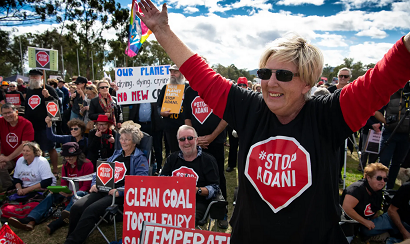
A similar situation recently played out in Australia. Two years ago, Australia’s then Treasurer Scott Morrison taunted the Opposition by carrying a lump of coal into the House of Representatives. It was to mock what they were saying were Labor’s hasty plans to move away from fossil fuels, which they said would result in thousands of job losses.
Scott Morrison is today the Prime Minister of Australia. He emerged victorious in the 18 May 2019 election, in what he described as a ‘miracle’ victory. The industries that are invested in coal, have welcomed the appointment.
Minerals Council of Australia (MCA) CEO, Tania Constable, told media:
“The Coalition government’s strategic economic reform agenda to keep taxes low, in conjunction with responsible 2019/20 Budget measures, provides opportunities for large and small business to be successful. It also means that the mining industry will continue to develop the nation’s minerals for the benefit of everyone. This is a win for regional jobs, particularly in the big resources states of Queensland, New South Wales and Western Australia. There is now a clear mandate for resources projects that have lawful approvals to proceed, such as the Adani coal mine in central Queensland and the Yeelirrie uranium mine in Western Australia.”
Adani Group has seen a lengthy delay on their mega coal mine in the north of the Galilee Basin in Central Queensland. They are seeking to generate 60 million tonnes of coal per year, with a total capacity of 2.3 billion tonnes over 60 years. It is expected to be the largest coal mine in Australia and one of the largest in the world.
On a federal level in the election, the people of Queensland seemingly voted in favor of the Coalition government, which to engineering bodies and the Adani Group specifically pointed to the fact that they think the coal mine should go forward. Appealing to jobs seemingly worked handsomely. Lucas Dow, Adani Australia Chief Executive Officer said in a Twitter video after the election results:
“When there is an opportunity like the Carmichael Project ready to deliver thousands of jobs today in a manner that is both commercially and environmentally responsible, people cannot fathom why the Queensland Labor government refuses to get behind the Carmichael Project.”
The Adani Group had its eye on getting the ball rolling on the mine in 2010. It took a couple years to grow legs, and by 2017 the regional headquarters of the mine were opened and the promise of construction was on the way. It was only in November 2018, that any indication the mine might be finished started to show. Soon after, it became an environmental bone of contention on the lead up to the election.
From the affect the coal mine will have on the climate, to the endangerment of the black-throated finch bird population, were among the issues being hurled at the Adani Group’s impending mine. There have also been protests under a movement known as #StopAdani.
Despite the national election results, voters were resolute in their intention to vote against the alleged climate denying politicians - most notably in Warringah. Exit polling in Warringah, where Tony Abbot from the Liberal Party was unseated by Independent Zali Stegall, indicated that climate change was voters’ top issue.
Thus, it seems like it will not be plain sailing for Prime Minister Scott Morrison as opposition parties and groups seek to continue to oppose the leading government on the topic of climate change. However, regional miners and engineers in the line of benefitting from a coal-friendly Prime Minister are welcoming the election results.
Works Cited
Cave, Damien. “It Was Supposed to Be Australia's Climate Change Election. What Happened?” The New York Times, The New York Times, 19 May 2019, www.nytimes.com/2019/05/19/world/australia/election-climate-change.html.
Karp, Paul. “After the Climate Election: Shellshocked Green Groups Remain Resolute.” The Guardian, Guardian News and Media, 19 May 2019, www.theguardian.com/australia-news/2019/may/20/after-the-climate-election-shellshocked-green-groups-remain-resolute.
- Details
- Written by: Quintus Potgieter
- Category: Developments
Temperatures in Nairobi, Kenya, reach 35 degrees centigrade in the summer months. Over five hundred kilometers away is the town of Malindi, where a brand new photovoltaic solar project is kicking off. If Kenyan engineers are looking to work in renewable energy, their chance has arrived.
The Malindi project will be the first utility-scale independent power project the country will see. Globeleq is a company hailing from the United Kingdom, and is heading up the project. They are also investing in renewable energy solutions in South Africa.
The company will be selling electricity to Kenya’s national electricity provider Kenya Power, recently agreeing to a 20-year deal.

Paul Hanrahan, Globeleq’s CEO, told media:
“The attractive investment climate combined with strong local community support sets the stage for this important project as well as future investments in Kenya. We are extremely pleased to be making this investment into the Kenyan energy sector.”
The construction will be complete and in operation by mid-2020, producing up to 40 megawatts of power. The rights to the land, the environmental impact assessment and the necessary permits needed for constructing have all been procured. The project’s construction has received nearly $100 million dollars AUD in funding from investors, who will all be enjoying a cut of the eventual profit. The engineering companies behind sourcing the necessary technology and constructing the actual plant are Sterling and Wilson Solar.
Kenya, unlike many of its other neighboring countries, is opening their energy market up to whatever entities may be able to provide electricity to its people. They intend to rely less on coal powered power stations and move to more renewable sources. It is all a part of the government’s National Electrification Strategy which aims to power Kenya by completely green energy by 2020.
A recent coal power plant construction reaching completion in Kenya is undergoing scrutiny for purportedly lying about the price of the electricity that will be produced at the power plant. The plant in Lamu, Kenya, is seeing a big level of pushback after the revelations were made public. Experts are saying the entire project should be scrapped.
The Kenyan government and the World Bank set up a $67 million dollar AUD facility under a project named Kenya-Off-Grid-Solar to further develop the private solar sector, in hopes that they can bring electricity to 14 communities that have been lacking energy solutions.
Principal Secretary of the Ministry of Energy, Joseph Njoroge, said:
“The country has made great strides in achieving connectivity with access to electricity standing at 75% though both grid and off-grid options. However, access to electricity is low in the 14 marginalized counties, which represent 72% of the country’s total land area and 20% of the population.
Works Cited
“Kenya in $47m Financing to Provide Solar Solutions.” Journal Du Cameroun, 11 June 2019, www.journalducameroun.com/en/kenya-in-47m-financing-to-provide-solar-solutions/.
“Kenya: First Utility-Scale IPP Solar Project Achieves Financial Close.” ESI, 3 June 2019, www.esi-africa.com/industry-sectors/renewable-energy/kenya-first-utility-scale-ipp-solar-project-achieves-financial-close/.
- Details
- Written by: Quintus Potgieter
- Category: Developments
Triton Submarines have taken man to where no man has gone before...to the bottom of the ocean.
Businessman and amateur pilot, Victor Vescovo, went down to what is believed to be the deepest point of the ocean a human being has ever travelled to. Its name is the Challenger Deep, located in the Pacific Ocean at the southern end of the Mariana Trench. From surface to seabed the underwater marvel is 10,928 meters deep and is the deepest point in the Earth’s hydrosphere. The vessel would have to sustain pressure equal to 50 buses pushing down on it. Descending nearly 11km in April 2019, Vescovo now holds the record for the deepest ocean dive made by a human. What he found on the ocean floor will shock you.
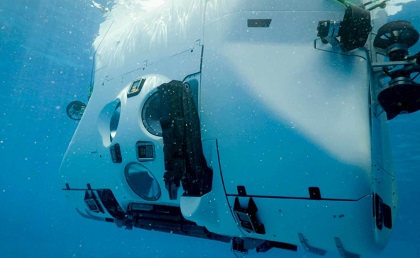
Triton has recently been working on creating prototypes of submersibles that are able to withstand incredible amounts of pressure atat significant ocean depths. And they have struck gold - or should we rather say titanium - with the Triton 36000/2 Hadal Exploration Systems. They explain how the submersible came to life on their website:
“Three years ago, an American client came to us with a dream. He had climbed the seven summits, the tallest peaks on each of the seven continents, and next he wanted to dive to the deepest point in each of the five oceans. The challenge was set. Only two manned submersibles have ever dived to full ocean depth, and each made only a single dive. Could Triton design and build a submersible capable of repeat dives to the most remote, hostile and unexplored region of our planet? The answer, a resounding “yes”.”
The company spent every weekday (and probably weekends) working on designing and engineering feasibility studies of the submersible. Then, in 2016, the last design was decided upon and a manufacturer was chosen. They were off to the races.
The submersible’s alloy would be made of titanium, and surrounding the vessel, glass-bead based ‘syntactic’ foam to allow for buoyancy. The two materials are able to withstand immense pressures - whilst making enough space for two passengers. But, what made this submersible novel was the lack of welding work required. One of these submersibles can be purchased for just US $48.7 million.
Triton eventually settled on a name: The DSV (Deep Submergence Vehicle) Limiting Factor. A fully commercially accredited full ocean depth (FOD) manned submersible. And the plan was to take it on a journey that would see it visit the bottom of all the five oceans - a mission entitled Five Deeps Expedition. He has since completed four out of five of the expeditions and is to complete his mission in the Arctic Ocean in September 2019. His entire journey has been filmed and will be made into a documentary to air on Discovery networks.
Filming the documentary also required some engineering. The team had to design cameras that could sustain the pressure down at 10,000m below sea level. Unmanned vehicles would also be sent out onto the seabed to scan the surface so it could be recreated in virtual reality - which too had to be built out of the robust materials the Triton 36000/2 was made up of.
Here is a video from Triton that shows some of the engineering work around the testing of the submersible before they took on the five oceans.
<iframe width="702" height="395" src="https://www.youtube.com/embed/bTuKBeG1bRE" frameborder="0" allow="accelerometer; autoplay; encrypted-media; gyroscope; picture-in-picture" allowfullscreen></iframe>
At the bottom of the Challenger Deep, Vescovo made a chilling discovery on the seafloor… plastic waste. After spending four hours hovering above the seafloor, he said he observed a plastic bag and sweet wrappers. Manmade waste was at the deepest levels of the ocean.
Nonetheless, the expedition is an amazing feat of engineering. Upon returning from the Challenger Deep expedition, Vescovo (talking to the BBC) said:
“It is almost indescribable how excited all of us are about achieving what we just did. The submarine and its mother ship, along with its extraordinarily talented expedition team, took marine technology to a ridiculously higher new level by diving - rapidly and repeatedly - into the deepest, harshest, area of the ocean.”
Works Cited
“Hadal Exploration System.” Triton Submarines, tritonsubs.com/hadal/.
Morelle, Rebecca. “Mariana Trench: Deepest-Ever Sub Dive Finds Plastic Bag.” BBC News, BBC, 13 May 2019, www.bbc.com/news/science-environment-48230157.
- Details
- Written by: Quintus Potgieter
- Category: Industry
We are only five months into 2019 and America has already seen 693 tornadoes tear across their sky. Just over the last couple of weeks, the American Midwest has been battered by over 100 tornadoes that have left several states with billions of dollars of damage to recover from. And so, with many buildings left destroyed, civil engineering is quick to come to into action.
The immediate concern when any storm hits is flash flooding. Over the last 12 days Oklahoma has witnessed rivers and dams rise to levels that have never been seen before.
Their streets were flooded due to drainage systems being overloaded and the natural earth simply not being able to absorb the amount of water falling from the sky. However what follows the flash flooding is far more worrying. When the sky turns an eerie shade of green, Americans known all too well what follows…a tornado.

Last Wednesday, late in the evening of 24 May, a maximum strength EF3 tornado touched down in Jefferson City, Missouri. Tearing across 32 miles of country, the tornado resulted in immense amounts of heavy damage. Dr Giuron (Grace) Yan, a Missouri S&T assistant and professor of structural engineering, made a trip to Jefferson City to study the destroyed structures, and their structural integrity after the tornado
Yan currently operates a wind hazards laboratory named the WHAM lab at Missouri University of Science and Technology. Sending a number of drones into the sky, Yan and her team were able to assess the damage left behind in the wake of the storm, observing some houses with their roofs completed taken off but some with only partial damage.
Yan will be using the data gathered for research purposes in hopes that her and her team can develop guidelines for tornado-resist construction. The ultimate goal would be to have these guidelines standardized and used to improve the official building codes in the area.
She notes that the extensive damange is due to the municipal building codes for residents not enforcing a rule that homes must be able to withstand rotating winds. She says some homes in Jefferson City are only built with ‘straight-winds’ in mind. She is thus planning to recommend the municipality implement residential building codes that will force residents to build with more than just thunderstorms in mind. Yan told STL Public Radio:
“If the tornado intensity is not that high, and if we have improved our building code to recommend tornado-resistant design, the damage would be much less. For example, a number of buildings, the entire roof has been blown off but if we performed tornado-resistant design, the damage can be minimized to just the shingles.”
The civil engineering lessons Yan and her team are learning are useful. Yan points out that the Missouri State Penitentiary didn’t withstand the force of the tornado but just across the road, a house seems virtually untouched. Residents of the town are in awe of the tornado, effortlessly carrying away blocks of concrete with the wind.
The research is important, especially when considering that in the future it could save lives when future tornadoes hit. Unfortunately, some damaged buildings in the wake of tornadoes can never be repaired, and some lives are ultimately lost. Nonetheless, Americans are resilient, and their rebuilding spirit has kicked in, in a country that has seen this carnage many times before.
Works Cited
Chen, Eli. “Missouri S&T Engineers Inspect Jefferson City Tornado Damage To Make Houses Stronger.” St. Louis Public Radio, news.stlpublicradio.org/post/missouri-st-engineers-inspect-jefferson-city-tornado-damage-make-houses-stronger#stream/0.
Ktul. “UPDATE: Officials Pull Back on Water Release from Keystone Dam.” KTUL, 29 May 2019, ktul.com/news/local/keystone-release-could-be-dropping-as-resilient-community-fights-back-flood-water.
- Details
- Written by: Quintus Potgieter
- Category: Developments
Engineering is transforming Kenya into an innovative hub of new technologies that are both helping the poorest of the poor and assisting the growth of the business sector.
A startup from the Penn State College of Engineering, Kijenzi, has been training Kenyans in the art of 3D printing. The startup also helps address several key issues encountered in the rural medical facilities in Kenya.
In Kenya, clinics are being faced with many issues like outdated machinery, unrefined supply chains, and limited access to equipment they need to ensure a healthy environment for patients. On Kijenzi’s website they explain how their 3D printers work:
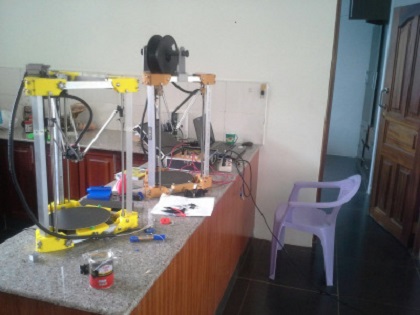
“At the most basic level, 3D printing is a form of additive manufacturing - the process of adding material to a product. The printers used by MK take computer-generated 3D models and, with a series of programs, translate the models into a form readable by the printer. With this formatted file, the printer can then use fused deposition modelling (laying down many thin layers of material, in this case plastic filament) to actualize the model. With this process, a huge variety of products can be generated, printed in many materials, and from infinite designs.”
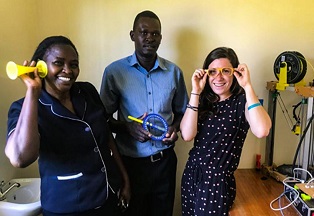
The useful element of Kijenzi’s 3D printers is that it can use a versatile PLA plastic filament. This certain type of filament can be made up of recycled plastics as well. Thus, collected and recycled plastic in Kenya could make up filaments that can be changed into new products by 3D printers in the country.
The printer itself is put together by Kijenzi, and is fabricated out of affordable but durable materials. The printer can produce “simple knobs and brackets needed for maintaining appliances and machinery to unique application medical items”, Kijenzi says. It can also print frames for bifocals, hearing apparatuses and more.
Entrepreneurship & Business
Hobbyists have taken up 3D printing globally, but entrepreneurs have also started opening their doors to the public offering to print items customers want as well. A 3D printing service in Nairobi named Objet Kenya is a 3D printing service provider showing Kenyans what is possible in the 3D printing industry.
Farai Mashambanhaka, who worked with Objet Kenya, wrote in 3DPrint.com:
“There are several other companies offering 3D printing services in Kenya and the country has a great entrepreneurial and innovative spirit. This has made 3D printing a very sensible and lovable technology and if there is something that fires it all: it is the Kenyan will provide homegrown solutions.”
Another 3D printing service provider in Kenya is Ultra Red Technologies. They print ‘customized canopies for wildlife exploration vehicles’. They are also printing parts for solar powered desalination devices that will provide clean, purified water for Kenyans.
Another company offering training in 3D printing for Kenyans is a place named Kenya Connect. It is a not for profit organization offering STEM classes to help Kenyans learn the basics.
Works Cited
“3D Printing.” Kijenzi, 26 June 2017, medtechkijenzi.wordpress.com/3d-printing/.
“3D Printing in Africa: Kenya & 3D Printing.” 3DPrint.Com | The Voice of 3D Printing / Additive Manufacturing, 1 May 2019, 3dprint.com/242729/3d-printing-in-africa-kenya-3d-printing/.
- Details
- Written by: Quintus Potgieter
- Category: Student Stories
Sam Bates is a graduate of the Engineering Institute of Technology who recently earned his 52708WA - Advanced Diploma of Industrial Automation. He works in the automation industry in the United Kingdom and is employed as a controls engineer. But, it has been a journey to get to where he is today. Sam says:
“I left school at the tender age of 16 and went to engineering college to learn the very basics in engineering. While I was there, I got offered an apprenticeship at a local engineering company called Finishing Design Services. They build special purpose machinery and wanted to employ me as a panel wirer with the option to progress in future years if I had the right attitude.”

Leaving school as early as he did, and needing experience, he took the apprenticeship. He would go on to be a panel wirer for four years while he completed his National Vocational Qualification (NVQ) and apprenticeship.
“As promised, the company offered to pay for me to complete a HNC in electrical and electronic engineering at university for one day and evening a week for two years. I accepted and continued to develop, now doing more skilled work at my company, such as editing electrical drawings, powering up machinery and getting introduced to software.”
Once he had completed his Higher National Certificate (HNC), he decided to slow down on studying and continued to gain work experience and develop his skills in the workplace. He began designing the electrical schematics for small projects and writing PLC software for them.
He spent seven years at Finishing Design Services and was ready to move on. Sam moved to London. There, he worked as an engineering technician at a company named Suncombe Ltd. The company manufactures process machinery. However, he had a feeling that the qualifications he had earned were not quite enough to reach the career aspirations he had.
“I progressed within that company to commissioning the software and servicing existing machinery. This is where I decided to take up the Advanced Diploma of Industrial Automation to develop my knowledge.”
Upon graduating from the course, Sam was looking to level up once moreso he began looking for controls engineer jobs. He eventually landed a job at a new company named ATM Automation.
He has since been with the company for six months, writing and commissioning software for automation machinery.
Sam believes the engineering industry has changed his life and encourages young people to heavily consider going into engineering. He said:
“I cannot understand why young people do not want to jump into any kind of engineering type of work. I would encourage young people to get an apprenticeship once finishing school, or after their A levels* - and to study part time while they work. This would give them the practical experience that employers desire and the opportunity to develop their knowledge.”
Equipped with his Advanced Diploma, he is confident in his job and ready for more challenges that the engineering industry can throw at him. As he continues growing his skill set, Sam expects to become a senior controls in engineer in the next ten years.
*a public examination requiring advanced knowledge in a subject and taken at the end of secondary school in the United Kingdom.
- Details
- Written by: Quintus Potgieter
- Category: Industry
In the 1800s the United States was industrializing to the point where New York and San Francisco, states that were quite literally on opposite sides of the country, needed to figure out a central point at which they could trade with each other. They would, via their respective railroads, meet in the middle at a trading port in New Orleans. However a lake stood in their way, Louisiana’s Lake Pontchartrain.
The railway, at over nine kilometres long, is the longest railway crossing over water on earth and the longest railroad bridge in the United States. Engineers completed the bridge over 130 years ago. Back then, it was entirely made of wood. Now it is a concrete ballast deck bridge.
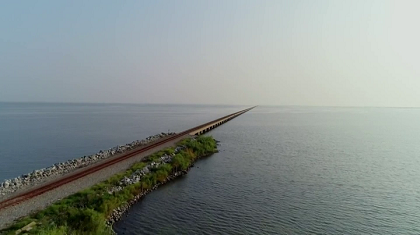
The bridge provides a pathway into New Orleans and is still to this day a vital piece of infrastructure for the trading of goods within the United States.
However, with a low lying concrete deck bridge comes a problem; boats can not pass underneath the bridge. In solution to the issue, engineer William Donald Scherzer came up with the idea of the rolling bascule bridge. A 66 meter long Scherzer bridge fitted to the railway raises the span by rolling on a track with a 830-tonne counterweight that takes the bridge skyward.
Patrick Weldon, an Assistant Division Engineer of Bridges on the Norfolk Southern Railway, talking to the television programme Impossible Engineering, explained:
“We have machinery at the top of the bridge that is powered by two electric drive motors. There are two pinions and those pinions rotate across a rack system. Essentially what happens is, it applies force to open the bridge.”
In 2005, the bridge was put through its biggest challenge yet; Hurricane Katrina. It led to the damaging of 7.5 kilometers of railway was swept off the bridge and into the bottom of the lake. Maintenance teams had to use cranes to pull the railway back onto the bridge deck. Only 16 days after Katrina made landfall, the engineers managed to get train services restored
India’s engineering marvel
At the end of 2018, Indiaopened their latest dazzling marvel of engineering; the longest combined rail and road bridge. It is named the Bogibeel Bridge. It crosses over the River Brahmaputra, sitting between the Dibrugarh and Dhemaji districts of the northeastern state of Assam. The bridge stretches to a length of 4.94 kilometers.
It has been a long process from laying the foundation stone of the bridge in 1997 until its operation in 2019. The bridge was delayed due to a plethora of issues, ranging from lacking the appropriate technology, subsequently missing deadlines as a result, and the rising costs of construction.

Engineers have essentially changed the lives of the people of Dhemaji with the construction of the bridge. The bridge has provided easy access to hospitals, education institutes and the Dibrugarh airport. The railway also bypasses 705 kilometersthat passengers would have had to endeavour before the bridge’s construction.
When all the delays were figured out, the bridge’s construction went ahead. Standing atop 42 pillars which were constructed using state-of-the-art Germany engineering technology, the bridge was welded together. The welding of the bridge has ensured it is significantly lightweight when compared to riveted girders. Engineers also had to account for the rising of the Brahmaputra river which swells during rainy seasons. Consequently, they built the bridge 32 meters above the river water level.
The bridge has a lifespan of 120 years, and is the second longest bridge in Asia. And now, it is the darling and pride of India.
Works Cited
“‘Impossible Engineering’ Beasts of the Bayou.” IMDb, IMDb.com, 1 May 2019, www.imdb.com/title/tt10121906/?ref_=ttep_ep1.
“All You Need to Know about Assam's Bogibeel Bridge - How Special Is the Bogibeel Bridge.” The Economic Times, economictimes.indiatimes.com/news/politics-and-nation/all-you-need-to-know-about-the-bogibeel-bridge/good-governance-day/slideshow/67241699.cms.
- Details
- Written by: Quintus Potgieter
- Category: Developments
Google I/O has kicked off in Mountain View, California. A keynote speech opened the conference, which will see software and hardware developers from all over the world descend on Silicon Valley to watch and learn how Google do what they do.
Google CEO Sundar Pichai kicked the proceedings off by outlining Google’s Mission, which is to “organize the world’s information and make it universally accessible and useful”. They continued on to announce a plethora of notable additions to their product lines including new smartphones, and smart home devices, but it was an addition to their search engine that raised eyebrows.
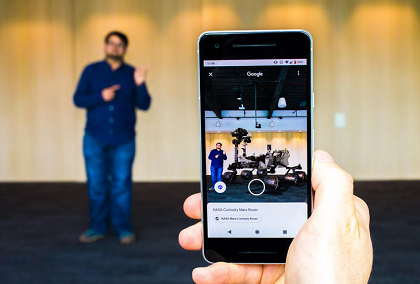
Google announced that they would be implementing augmented reality into their search engine through what is known as Google Lens. Google initially launched ARCore in 2018, a platform for building augmented-reality experiences, and now they have finally shown what is possible.
At the conference, Google showed how the functionality work, but CNET has shown, in more detail, how useful the addition is:
The benefit for school children and general scholars is immediately apparent. Searching for an object and seeing it in action right in front of you while you are learning is valuable for those who are audio/visual learners.
With this new search tool, when you find an item that can be shown in augmented reality you are able to click ‘view in your space’ and a 3D model of whatever you have chosen will be projected into your camera’s field of view. The CNET video above shows what seems to be a NASA rover in augmented reality.
Thus, for prospective engineers specifically, the virtual simulation technology that Google has developed could be very beneficial to their learning. Engineers could see in 3D the technologies mentioned in their textbooks, learning its intricacies and getting an idea of what they might see in their future employment.
Google now joins the league of companies like Microsoft who are trying to bring the virtual world into the real world specifically for learning purposes.
Clay Bavor, Vice President of Virtual and Augmented Reality at Google said:
“We think, with the technologies coming together in augmented reality in particular, there’s this opportunity for Google to be vastly more helpful.”
Works Cited
Lardinois, Frederic, and Frederic Lardinois. “Google Brings Augmented Reality to Search – TechCrunch.” TechCrunch, TechCrunch, 7 May 2019, techcrunch.com/2019/05/07/google-brings-augmented-reality-to-search/.
- Details
- Written by: Quintus Potgieter
- Category: Developments
In 2017, the world got its first taste of the future of electric mobility and looked like something straight out of a science fiction film. An unmanned remote-controlled electric ‘jet’ prototype that took to the skies and experts were more than impressed. The engineers at Lilium, a Munich based startup, were providing the world a glimpse of what might one day be possible - a fully electric jet taxi.
Fast forward to 2019 and the company announced their fully electric five-seater prototype jet, flying up to impressive speeds of 300km/h. On 4 May 2019, the engineers took their new unmanned prototype out to a launch pad in Germany to test the groundbreaking vehicle. It was a successful launch.
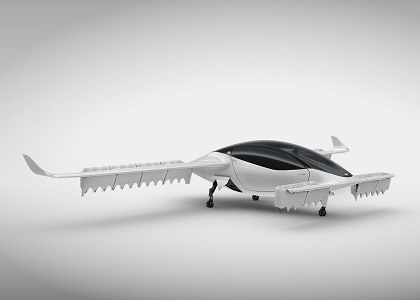
The electric jet takes off like a helicopter, going straight up without the need for a runway - making it a more accessible technology for companies wanting to purpose these aircraft. The company’s aim is to build an ‘Uber-of-the-skies’ mobility service that they intend to have operational in various cities around the world by 2025.
Co-Founder Matthias Menier said:
“This is the first time that we have a full-scale, full-weight prototype of that five-seater version. This is the next step in mobility as we perceive it. What we are trying to achieve is an air mobility revolution. We look at what is possible by the laws of physics. Our principle of maximum simplicity combined with a level of safety is really something that makes us unique.”
The Lilium jet is fitted with 36 all-electric engines on the flaps of the jet that produce minimal noise. The company says the low vibrations will mean a smooth and quiet ride for passengers, but most importantly not generate any carbon emissions. The company says they are the first electric jet engines in commercial certification.
The engineers working on the project say the fixed wing design of the aircraft only utilizes less than 10% of the maximum 2,000 horsepower the plane is capable of while cruising. The company says:
“This efficiency, which is comparable to the energy usage of an electric car over the same distance, means the aircraft would not just be capable of connection suburbs to city centers and airports to main train stations, but would also deliver affordable high-speed connection across entire regions.”
Now comes the hard part of refining the prototype and seeing if humans can actually travel inside the cabin. The company, however, do say that if they get their aircraft operational by 2025, a pilot will most likely be aboard helping fly the aircraft. But, they are not ruling out an autonomous aircraft in the future. The even harder part for the engineers and the company as a whole is getting safety approval in Europe and the USA, which the company is now in the process of doing.
Works Cited
Hawkins, Andrew J. “Electric Air Taxi Startup Lilium Completes First Test of Its New Five-Seater Aircraft.” The Verge, The Verge, 16 May 2019, www.theverge.com/2019/5/16/18625088/lilium-jet-test-flight-electric-aircraft-flying-car.
“Home.” Lilium, lilium.com/.
- Details
- Written by: Quintus Potgieter
- Category: Developments
Anglo American’s coal mining operations in Mpumalanga, South Africa, are becoming more efficient and safer. They are starting to roll out underground Wi-Fi and equipping their miners and engineers with smartphones. It’s a setup that will cost only $690,000..
Currently in South Africa, telephones are used inside mines to communicate above and below the mine, but they are not immediately available to everyone involved in the mining operation. Communications is just one of the many benefits of the new underground Wi-Fi. Miners can now send photographs and videos to fellow miners and engineers so they can troubleshoot any problems in the mine.
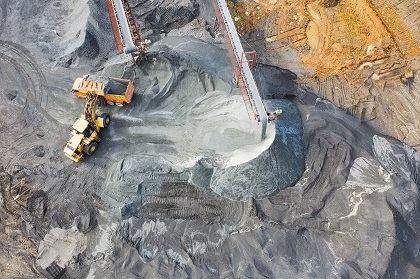
Anglo American’s Edgar Simfukwe told the media:
“We’re working in an environment where safety and productivity are paramount. The introduction of underground Wi-Fi is a game-changer. It allows our miners to communicate more easily, thereby making mines more productive. The main benefit is that breakdowns can be reported and resolved faster - in some cases, by contacting equipment manufacturers on the spot.”
Safety is another vital benefit. Miners can now be tracked throughout the mine which will also aid rescue crews if accidents happen. In the future, miners will also wear wearable technologies that can track their vitals whilst they do the heavy work - giving the mining company incredible oversight over its workforce’s wellbeing.
Once they successfully implement a communications mesh network, the company can also look into fleet management that can be automated utilizing Wi-Fi technology. This has been happening in some technologically developed mines around the world for some time now.
Automation in the mine a success?
Many mining operations around the world are creating interconnected networks of miners and mining technology through Industrial Internet of Things technologies.
In Western Australia, iron ore mining producer Fortescue Metals Group since 2012 had coupled their trucks up to an automated system that actually drives the trucks autonomously. The company calls it the Autonomous Haulage System (AHS). They are connected via a Wi-Fi system as well. In February 2019, however, a pair of the trucks collided into one another.
Since then, the technology has shown its reliability over time and avoided more accidents than it has caused. Chief Executive of Fortescue, Elizabeth Gaines, explained:
“Since the introduction of the first AHS truck at Solomon in 2012, AHS trucks have safely travelled over 24.7 million kilometres.”
Nonetheless, a preliminary investigation into the collision allegedly revealed that the trucks apparently lost Wi-Fi coverage in a certain location inside the mine. Thus, it seems, the mine’s mesh network was not properly communicating dynamically.
Anglo American is on track with their implementation of networked technologies. In 2017, they began their rollout of technologies into the mining sector. With a more than $34 million USD investment into technology like drones, remotely controlled drills and novel software, Anglo American has begun its revolutionizing of their operations.
Progress is being made in making mines all across the world with the implementation of Industrial Internet of Things technologies that are making for a safer environment for engineers and miners alike.
Works Cited
“Anglo American Heads up Underground WiFi.” ENCA, 20 May 2019, www.enca.com/news/anglo-american-heads-underground-wi-fi.
“Not so Autonomous: Wifi Outage Results in Driverless Truck Crash at Fortescue Mine.” MINING.com, 15 Feb. 2019, www.mining.com/driverless-trucks-not-flawless-two-crash-fortescue-mine-australia/.
- Details
- Written by: Quintus Potgieter
- Category: Student Stories
Jessica Ann Mckenty is an Apprentice Communications Technician at Ergon Energy. She is a noteworthy graduate of the Engineering Institute of Technology. In October of 2018, Jessica graduated with a 52782WA - Advanced Diploma of Industrial Data Communications, Networking & IT.
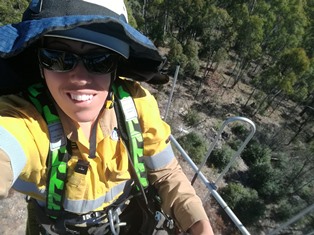 Jessica completed the Advanced Diploma in the final eighteen months of her apprenticeship at Ergon Energy. Through her academic endeavors and her apprenticeship, Jessica became equipped with everything she needed to make sense of the industry she was entering into. She said:
Jessica completed the Advanced Diploma in the final eighteen months of her apprenticeship at Ergon Energy. Through her academic endeavors and her apprenticeship, Jessica became equipped with everything she needed to make sense of the industry she was entering into. She said:
"I have been fortunate enough to get exposure to a wide range of applications of communications. This includes fiber splicing, tower rigging, mobile vehicle installation, radio communications maintenance and installation. I have also worked on upgrades of protection signaling paths (microwaves and fiber), removal of old SACS systems and installation of RTU's in their place, as well as installing and configuring communications modems and switches at remote sites."
Previously, Jessica had acquired an Electrical Trade certificate and had a reasonable grasp on some of the necessary information in her industry, but she says the Advanced Diploma presented her with ‘greater understanding and appreciation of industrial data, communications, networking and IT.'
“The highlights of the course would have been the DNP and SCADA modules, as many faults I encountered in my work involved these topics. Once I was able to breakdown the knowledge provided by EIT and use it in my fault finding methods, I did feel a sense of success.”
The fault finding, Jessica says, was made more accessible through the first four modules of the course: Physical Media, Industrial Data Coms, Wireless, and Ethernet. It was all systems go after she began familiarizing herself with the kinds of systems she came to know through her studies. She had newfound confidence when working at configuring switches and modems.
However, Jessica did find some aspects of the course difficult; specifically, the group work aspect of it. Being used to traditional ways of learning, Jessica found that the online method of learning that EIT provides took some getting used to. But soon after, she realized that she could re-watch lectures and found written summaries of past webinars.
Nonetheless, Jessica notes that she really thrived in her work while working through her Advanced Diploma. Her future outlook is one of ultimate optimism. She said:
"In relation to career progression, I feel I am a more valued member of my workgroup. The foundational knowledge that this course provides is priceless. I have been successful in being signed off early as to take on a Communications Paraprofessional role within Ergon, and I look forward to continuing my studies and having a successful career in this field.”
Jessica is considering studying towards a CISCO accredited course or pursuing an advanced networking course to further her knowledge in network operations. Equipped with the skills and the know-how thanks to the 18-month Advanced Diploma, Jessica feels that she is exactly where she needs to be — building a career in the engineering world.
EIT would like to honor her for never giving up on her course and persevering. That is why she is a runner up finalists of our EIT Graduate of the Year 2018. We hope she continues to take her engineering career from strength to strength and succeeds in everything she does.
- Details
- Written by: Quintus Potgieter
- Category: Student Stories
At the end of the 80s, in the far west of outback New South Wales, in an inland mining city known as Broken Hill, Cindy McGeorge embarked on an Electrical Fitting apprenticeship. And now, with a 52726WA - Advanced Diploma of Applied Electrical Engineering, she is an alumnus of the Engineering Institute of Technology.
Her life has been defined by becoming a mother, relocating, pursuing further education and her dreams in the electrical engineering industry. What follows is an interesting window into the world of a woman in the energy distribution world.
After her apprenticeship Cindy worked both above and underground at the local mines in Broken Hill and graduated to working with the mines’ SCADA systems. After spending some years there she felt it was time to move on. She said:
“After 10 years I went to work in the south west Queensland oil and gas fields as a contractor as well as working part time on a cattle station. I was lucky during this time to give birth to two boys. My eldest child and his nanny would travel with me to my jobs. When the second boy came along, it was time for a change.”
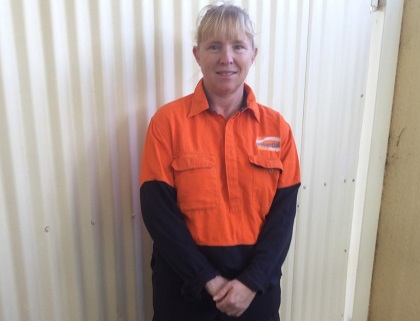
Cindy moved to a nearby town, Tibooburra. She continued to contract on a smaller scale, but also spent time raising her children and running a local shop.
But she was due for another shake-up. She said:
“After a few years in Tibooburra, I found myself contracting to the local utility Essential Energy and this turned into a casual position. Some of my jobs included all remote meter reads, fault and emergency work and meter installation.
“After 6 years I relocated to obtain a full-time position within Essential Energy, but also to access a better education for my children. This landed me in a town in the middle of New South Wales, where I continued as a full-time Electrical Technician with the distribution company.”
She then began studying through the Engineering Institute of Technology to further her knowledge and skills. She has since moved to Griffith in New South Wales, and is excited to see what the future will bring.
Cindy notes that it is interesting to see how technology is transforming the industry she has come to know and love. She adds that the introduction of small and large-scale solar and wind energy projects have been an impressive and exciting addition and believes these advances will, and should, attract young, passionate people to the electrical industry.
Cindy is not stopping or slowing down. She is determined to achieve great things, and further her career in engineering. She concluded:
“I have spent 30 years in the trade and always had a passion to do things better and different. Engineering will hopefully open the doors that can allow me to achieve this. With the aid of more study, I will see myself move towards a job that allows me to be creative and productive.”
All of us at EIT wish Cindy everything of the best. We know that her career will continue to be defined by the passion she brings to her work and her further studies.
- Details
- Written by: Quintus Potgieter
- Category: Industry
Wireless charging technology has had a serious hit or miss relationship with the mobile industry. With some standards being cleared, some technology being engineered and some being still stuck in pre-production, it’s hard to know what’s going on sometimes. However new developments might mean we are closer than we think.
Qi is the charging standard that defines wireless power transfer using inductive charging methods. The increasing development of this technology has gotten engineers minds inventing at a million miles an hour. If smartphones will be able to charge their batteries without the need for wires, what else could be charged wirelessly too?

In 2016, a company named Texas Instruments, who specialize in wireless technologies, began experimenting outside the smartphone and branching out to other industries. They released the industry’s first Qi-certified 15-W wireless power transmitter.
“Industrial equipment such as electronic point-of-sale devices and handheld medical equipment reap the benefits of 15-W wireless power. This breakthrough in technology enables wireless models and reduces overall end-application size by helping eliminate bulky wiring.”
However the smartphone industry is still leading the way in the wireless charging revolution. There are rumors currently circulating that the next generation of iPhones will employ what is called bilateral charging. This form of wireless charging allows one charged up phone to transfer some of its battery power to another device that requires charging.
Electronic Vehicles
Electric vehicles (EV) are another industry where wireless charging could revolutionize the technology used. However, whilst the industry has taken many leaps forward; EVs are still stuck in the development phase.
The company Qualcomm develops wireless charging technology for electric vehicles under the name HALO and has subsequently just sold their technology off to MIT-founded business WiTriCity. WiTriCity has now started the process of formalizing a wireless charging standard for automakers. Their aim is to make ‘EV charging easier than refueling’.
They are working on park-and-charge bays and power transfer grid-to-battery technologies that would charge cars through surface or in-ground placements placed in asphalt, cement and more.
Encouragingly for WiTriCity, the joint venture with Qualcomm gives them access to incredible patents and pending patent applications.. Now the companies can work to improve the technologies and could lead to some breakthroughs for electric vehicles.
Alex Gruzen, CEO of WiTriCity, in a press statement, wrote:
“WiTriCity’s wireless charging technology is key to the future of mobility which is clearly electric, and is increasingly shared and autonomous.”
Qualcomm’s HALO technology has also been embedded into an electric vehicle charging road. The road was also a joint venture - this time, with automaker Renault. Their tests saw an electric vehicle being charged at 20kW while travelling 100km/h.
Robert Lassartesses from Renault said:
“If you compare fast charging with gasoline, it’s not equivalent. Even in our best dreams [EV charging] is 300kW. We are 20 times below what you can do with gasoline and it’s important to keep this in mind. Equivalent service between electricity and [traditional] fuel cannot be expected.”
300kW could be attainable with an 800V battery, the experts said, but the battery would be far too heavy. Thus, the development of batteries, and their wireless charging applications, is ongoing across engineering industries. The benefit for the consumer is clear: batteries that last longer and go further.
Works Cited
“TI Announces the Only Qi-Certified 15-W Wireless Power Transmitter.” News, news.ti.com/ti-announces-only-qi-certified-15-w-wireless-power-transmitter.
Ward-Foxton, Sally. “'Electronic Road' Charging For EVs Moves Forward.” EETimes, EE Times, 23 May 2017, www.eetimes.com/document.asp?doc_id=1331778.
- Details
- Written by: Quintus Potgieter
- Category: Industry
Nokia wants to show the world what is possible with 5G networks and automated factories. Not only is the company now manufacturing mobile technologies with 5G embedded within their architecture, but they are also using it to automate their factories.
Based in the Finnish city of Oulu, Nokia has built a factor which they consider to be the future of modern industrial production and manufacturing. Whilst the plant has always belonged to Nokia, the company has now retrofitted the plant with new llot-powered technologies.
Nokia wanted to make a factory that was “conscious”, a self-thinking and always learning factory of the future. 5G, in general, will transform engineering industries; industries that have been trying to take the workforce out of harm's way by replacing repetitive tasks in industrial operations.
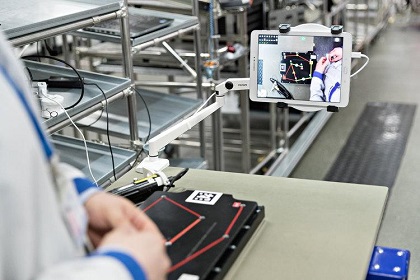
President and Chief Executive Officer of the Nokia Corporation, Rajeev Suri said:
“It possesses unique characteristics that make it socially and economically transformative: low latency (in other words, almost imperceptible lag when carrying out remote orders); fast speeds (around 10 times faster than today’s networks); connection capability (enabling up to 1 million linked devices per square kilometer); and unparalleled reliability (allowing new precision-based applications).”
To show how the lower latencies work with 5G, Nokia tested advanced real time quality control with their 5G system powered by Intel. The engineers intentionally made errors in a manufacturing process, which the 5G monitoring system with a camera attached to it flagged the error immediately, suggesting course corrections for the process. See it in action here:
Nokia is incorporating the characteristics of ‘flexibility, versatility and productivity’ into the factory. They are also processing all of the data generated by the factory in the cloud. Suri writes:
“The vast majority of the factory is now automated. Its temperature and humidity automatically change to keep machines in prime condition. Parts are delivered using autonomous vehicles. Equipment carries indoor GPS, allowing managers to see exactly where it is, what it’s doing and whether it could be used or positioned more efficiently.”
Nokia does not only believe that the adoption of 5G is good only for manufacturing plants, they believe it will transform all humans’ lives. The factory itself has worked well on their 4G network, proving that many companies can start with the technology already available to companies around the world. But 5G is the next frontier. Suri writes:
“This is only a first step. More are necessary. Governments in particular need to step on the gas and prioritize 5G adoptions. But if ever something was worth working for, it’s this. I firmly believe that the sooner governments, businesses and individuals have access to 5G, the sooner the Fourth Industrial Revolution can help people all over the world enjoy safer, happier, more productive lives.”
Works Cited
“Industry 4.0 Use Case over 5G at Nokia Oulu Factory.” Nokia, www.nokia.com/about-us/news/media-library/industry-40-use-case-over-5g-at-nokia-oulu-factory/#1.
Suri, Rajeev, and Nokia Corporation. “5G Will Redefine Entire Business Models. Here's How.” World Economic Forum, www.weforum.org/agenda/2019/01/5g-will-redefine-entire-business-models-here-s-how/.
- Details
- Written by: Quintus Potgieter
- Category: Industry
It was a story of ineptitude, willful ignorance, and oncoming catastrophe. But that didn’t stop civil engineers in the state of California from bouncing back and rectifying what had been neglected. In February 2017, Oroville Dam’s main and emergency spillways were damaged due to heavy rains which exposed the ill maintenance and general corrosion of the main and emergency spillways.
The reservoir is California’s second-largest provider of water. The dam’s capacity is 4.363537 km3, which equates to 1.75 million Olympic swimming pools. During the crisis, more than 190,000 people had to be evacuated from Oroville and the surrounding counties due to fears that the concrete weir of the dam could collapse and send water flooding into the regions.
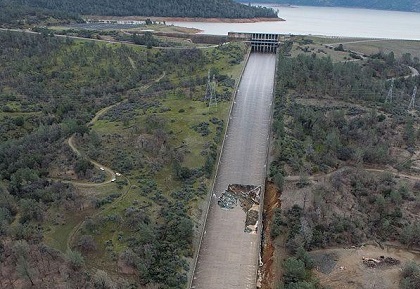
Thankfully, there was no collapse in Oroville, but extensive repairs were needed. The Department of Water Resources’ engineers went to work and began a repair project that would see some impressive work done. On the 2nd of April 2019, it opened for the first time after the crisis.
The repair
On the main spillway, every 5 minutes, a dump truck would place 19 cubic meters of roller-compacted concrete onto the main spillway. They would eventually lay over 100 thousand cubic meters of concrete for the repair of both spillways. They utilized 16,000 feet of drainage pipe, which is equivalent to 500 Olympic swimming pools. And to keep everything in place? Five million kilograms of reinforcing steel.
The engineers constructed a secant wall out of reinforced concrete piles for the emergency spillway. The wall, in length, was just four feet shorter than the height of the Empire State Building.
It was initially thought that the repair work would only cost $400 million USD, but the final number was much larger. The final repair bill weighed in at $1.1 billion USD. Speaking to the Sacramento Bee, Joel Ledesma, the deputy director of the California Department of Water Resources said:
“We are prepared; we’ve spent the last two years restoring full functionality. The industry has learned a lot since this dam was built 50 years ago.”
They reopened the spillway and began pushing water at 3,300 cubic feet per second down the newly repaired spillway on its first day of operation.
Joel also told the media that the new spillway was ‘designed and constructed using 21st century engineering practices and under the oversight and guidance from state and federal regulators and independent experts’. Below, is a video that shows the rebuilding process:
Works Cited
Caraccio, David. “Enough Concrete to Pave from Oroville to Texas, and Other Facts about Oroville Dam Repair.” Sacbee, The Sacramento Bee, 5 Apr. 2019, www.sacbee.com/news/state/california/article228890254.html.
Pedroncelli, Rich, et al. “$1.1B Oroville Dam Spillway Repairs Put to Test.” Construction Equipment Guide, Construction Equipment Guide, 10 Apr. 2019, www.constructionequipmentguide.com/11b-oroville-dam-spillway-repairs-put-to-test/44557.
- Details
- Written by: Quintus Potgieter
- Category: Developments
Engineers and scientists have embarked on the race of a lifetime to perfect energy efficient refrigeration technologies. At this point in time, refrigeration technologies are a large contributor to greenhouse gases due to their amount of electricity consumption.
A group of international researchers at the Chinese Academy of Sciences have reported that they have come closer to perfecting a new form of refrigeration that achieves a cooling effect utilizing crystal plastics.
Instead of compressing gas in the traditional way refrigerators do it, the researchers attempted to apply pressure to the plastic crystal. The result is a change in the molecular structure of the crystal plastics, which rapidly absorbs any heat.
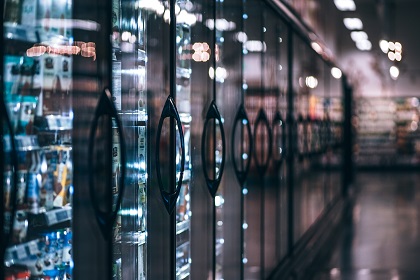
Dr Bing Li, one of the researchers of the study, speaking to The New Scientist said:
“We identified plastic crystals as promising materials for solid-state refrigeration. A tiny pressure can switch the materials between the disordered state and the ordered state, resulting in a large change in energy.”
Within the crystal, the molecules compress and decompress which in turn produces a cooling effect. Dehong Yu of Australia’s Nuclear Science and Technology Organisation (ANSTO) speaking to ABC News said:
“One cycle will cause a 50-degree difference in room temperature with very little pressure. This is a perfect example of where we use our fundamental research to lead into a real thing that can benefit our everyday life.”
One of the plastic crystal compounds known as neopentyl glycol reportedly has an ‘energy change tens of times greater than other potential solid refrigerants’. The compound can absorb much more heat than solid coolants at the same pressure.
The researchers are calling it ‘atomic refrigeration’ and it could make its way into range of other consumer products. It could especially be used in air conditioners.
However, there is still some innovation required with the plastic crystals. The researchers point out that some more trial and error is needed to make them more viable as a refrigerating alternative. They write:
“Nevertheless, plastic crystals are not perfect caloric materials. For instance, given their organic nature, they have relatively low melting points (typically about 300-400K) which is not desirable for refrigeration applications. In addition, the properties that make plastic crystal highly deformable mean that these materials lack the mechanical resilience to endure many refrigeration cycles.”
Thus, the crystal in its current form still requires some further development before it replaces traditional cooling methods. This is where traditional refrigerators have an upper hand; gases can be cycled without end and determination.
However once plastic crystals has been perfected, cooling technologies could microchip-sized. It is now up to the engineers and scientists to figure out how to ensure multiple cooling cycles and scale the technologies appropriately.
Works Cited
Cazorla, Claudio. “Refrigeration Based on Plastic Crystals.” Nature News, Nature Publishing Group, 27 Mar. 2019, www.nature.com/articles/d41586-019-00974-5.
Lu, Donna. “Fridges Made from Plastic Crystals Could Help Cut Carbon Emissions.” New Scientist, www.newscientist.com/article/2197805-fridges-made-from-plastic-crystals-could-help-cut-carbon-emissions/.
Weule, Genelle. “Your Fridge Is Bad for the Environment. Here's What Could Someday Replace It.” ABC News, Australian Broadcasting Corporation, 28 Mar. 2019, www.abc.net.au/news/science/2019-03-28/plastic-crystals-could-keep-us-and-the-planet-cool-in-the-future/10943796.
- Details
- Written by: Steve Mackay
- Category: Blog - Steve Mackay
Dear Colleagues
I would respectfully suggest that most people and their companies go about their day-to-day work without a strong sense of purpose. However, in achieving success and fulfillment it is absolutely critical for both you and the business you work for to seek an overriding purpose.
Research Shows
Research clearly shows that the finest companies are those that have a deep sense of purpose and employ people who similarly derive meaning from this purpose. This overarching sense of purpose drives everyone on a day-to-day basis and gives meaning to their work.
As Nicholas Pearce (Professor from the Kellogg School of Management) remarks: The 'why we are here' drives the 'what we will do to achieve this'. Unfortunately, most companies in today's highly competitive landscape are driven simply by profit maximization. The financial pundits would fall about laughing if as CEO you indicated that you weren't particularly interested in profits but in providing meaning to your employees (and to the firm).
Obviously, you need profits to be sustainable as a business to pay the bills, to grow and to withstand the inevitable financial ups and downs. But this should not be the main reason why the firm exists. A firm should have some underlying purpose and provide meaning to its employees.

Purpose is a Powerful Driver
Most companies tend to indicate that they want to stay in existence and keep making profits. And most people are in auto mode and tend to front up to work without asking what they are doing besides earning a dollar to pay the bills. This makes their commitment to a company fairly shallow.
But believe me - having an underlying purpose is an extraordinarily powerful driver for everyone and enables you to easily distinguish yourself from other organizations. Without wanting to use our training and education firm as an immodest example - our overriding purpose of providing useful practical education to our incredible students, is a hugely powerful driver and creates passionate staff who can withstand the inevitable ups and downs with every business. Every day we get a stream of student success stories - improved careers/successful projects which have given them and their community’s better lives and which authenticates our stated purpose. What more motivating can one get?
You have to Ask the Hard Questions
You have to ask the question as to whether you are in the right job where you have purpose and meaning. And then try and change the environment to provide purpose. Or maybe look at other opportunities especially if you are in an unpleasant culture which impacts on your quality of life.
A Job with Meaning isn't a White Collar one
A job with meaning doesn't have to be a white collar professional job. It could be anything ranging from a sewerage worker (e.g. keeping you in a disease free and safe environment no matter how poor you are) to an operator of a pharmaceutical plant (e.g. providing life to millions of people suffering from cancer).
Band Aids Don't Work
Simply adding corporate responsibility or community activities to a company's mantra or providing funding for people who are disadvantaged in some way, isn't a long term sustainable reason for purpose in your company. There needs to be a deep and abiding reason for existence and indeed, growth.
Ask the Company Employees
A good way of ascertaining whether the people and the company they work for has purpose is simply to ask them. And if there is no deep reason why they are working at a company besides collecting a monthly salary or some vague job satisfaction, it is unlikely that there is some deep purpose.
It is imperative that you provide the people you work with a sense of purpose and meaning in their lives. And if you perceive that that a person doesn't fit here, it is possible that you need to counsel them about looking at alternative opportunities. Life is short and one needs to seize the moment.
Finally - Purpose Can Drive Profits
Many people have the misconception that you can only have a deep sense of purpose in your company when you are a Mother Teresa type organization providing the poor with care and support without any profits; but this is possibly missing the key point. Purpose will unerringly drive profits as you need to have a sustainable activity to continue to have purpose.
Yours in engineering learning
Steve
- Details
- Written by: Quintus Potgieter
- Category: Industry
Roads are something we use every day. Whether it’s for going to work, school or anything in-between, the quality infrastructure of roads are detrimental to our safety. So what do you do when they start to fall apart?
Road infrastructure in Johannesburg, South Africa, is currently under threat. 94% of bridges are in just fair to extremely poor condition meaning out of 902 bridges, only 6% are acceptable. 707 bridges are categorized as poor to very poor in terms of structural integrity. These statistics were released by the Johannesburg Roads Agency (JRA) and Mayor of Johannesburg Herman Mashaba.
Mashaba spoke to Carte Blanche about the bridges, saying:
“You drive over them or underneath them at your own risk. It is a scary situation. I have engineers on a regular basis that go and look at the condition [of the bridges]. Where am I going to get 6 and half billion Rand to fix them overnight?”
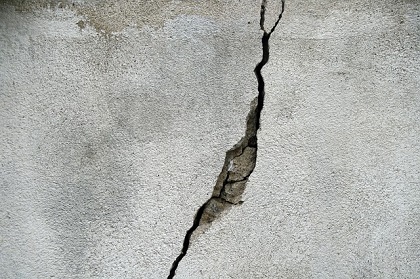
In 2018, there was an emergency sectional closure of the M2 Selby Bridge to prevent further stress on the aging infrastructure. However the diverted traffic is now crossing over bridges which, according to local engineering experts, are also structurally unsound.
Unfortunately, Johannesburg’s government is lacking the resources to upgrade the quality of the roads. Mashaba blames the previous government of the city - that government being the ANC. Now, Johannesburg has been taken over by the Democratic Alliance and they sit with the maintenance shortfalls.
The JRA says that the rise in population and developments in the city has caused more traffic, which in the long term has adverse effects on bridges. The JRA also reported that some bridges had even reached the end of their design lifespan.
And it doesn’t stop there. Unfortunately, for the safety of the people of Johannesburg, there is proven corruption within the Johannesburg Roads Agency. The tender process that is supposed to delegate the task of repairing bridges with monetary compensation to construction contractors is being done irregularly. Consequently, there is a bottlenecking of the maintenance and repair of bridges. The bridges could be ticking time bombs if more rain is expected - Johannesburg's city transport department confirmed that 37 bridges had collapsed during storms since 2013.
Equally perturbing is the fact that the JRA has not released to the media or the public a list of bridges that need urgent attention however it is evident that at least some work is being done. On the 25th March 2019 a R6-million (about $424,000 USD) project saw rehabilitated roads opened in Ivory Park near Midrand. This has included underground storm water management systems to ensure a longer life span for the bridges.
With slow maintenance and repairs, the chances of loss of life from potential collapses grow with every hour that goes by. The hope is that the right companies with the right civil engineers get contracted to maintain and repair the many bridges that need serious attention in Johannesburg.
Works Cited
Arnoldi, Marleny. “JRA Completes Two Ivory Park Road Upgrades, More to Follow.” Engineering News, www.engineeringnews.co.za/article/jra-completes-two-ivory-park-road-upgrades-more-to-follow-2019-03-25.
“Fraud and Corruption Inside the Johannesburg Roads Agency | Carte Blanche | M-Net.” YouTube, 2 Apr. 2019, youtu.be/36usxDDZGIA.
Tonisi, Lelethu. “Structural Decay: Crumbling Bridges: M2 Closure Adds to Joburg Commuter Stress.” Daily Maverick, Daily Maverick, 14 Mar. 2019, www.dailymaverick.co.za/article/2019-03-14-crumbling-bridges-m2-closure-adds-to-joburg-commuter-stress/.
- Details
- Written by: Quintus Potgieter
- Category: Developments
There are two schools of thought when people see a back flipping robot. Some - and they’re probably engineers - find it absolutely awe inspiring. And some have overtly negative reactions and feel a little creeped out by it.
Nonetheless, engineers at the Massachusetts Institute of Technology (MIT) Biomimetic Robotics Laboratory have designed a robot that can backflip on demand. It is called the Mini Cheetah. The engineers proclaim the robot is ‘powerful, robust, and inexpensive’ and it is indeed quite the marvel.
The robot is fast; it can run at up to 2.45 meters a second. It is also incredibly responsive to human interaction. In the video the engineers released, they are pictured toying with the robot and putting it through a plethora of ‘stress tests’. They are seen kicking it around, shoving it, and throwing it from a height to the ground. In all their tests, the robot reacts and centers itself - returning itself to its initial stance.
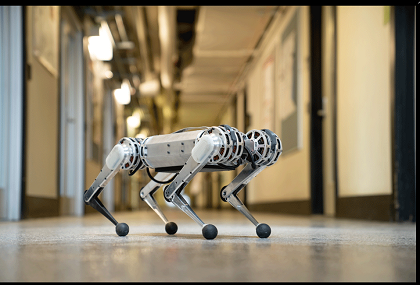
Needless to say, there has been a large level of trial and error to get the robot actually doing the things the engineers hoped it would be capable of.
With its nimble abilities and impressive prowess, the robot is able to quickly adapt to whatever environment surrounds it. The question next is: What could these robots be used for in the future?
The robot is fast; it can run at up to 2.45 meters a second. It is also incredibly responsive to human interaction. In the video the engineers released, they are pictured toying with the robot and putting it through a plethora of ‘stress tests’. They are seen kicking it around, shoving it, and throwing it from a height to the ground. In all their tests, the robot reacts and centers itself - returning itself to its initial stance.
Needless to say, there has been a large level of trial and error to get the robot actually doing the things the engineers hoped it would be capable of.
With its nimble abilities and impressive prowess, the robot is able to quickly adapt to whatever environment surrounds it. The question next is: What could these robots be used for in the future?
Showing it off and shipping it out
The group of mechanical engineers behind the Mini Cheetah have been experimenting with the design and producing other iterations of the robot. The team went to the MARS Conference two weeks ago. The conference is headed up by Amazon boss Jeff Bezos.
Lead developer of the Cheetah robots, Benjamin Katz, told media:
“A big part of why we built this robot is that it makes it so easy to experiment and just try crazy things, because the robot is super robust and doesn’t break easily.”
At the conference they showed off their bigger iteration of their Cheetah robots, the Cheetah 3. The engineers are prepping ten Cheetah robots and are lending their technology to research labs that can continue building on what they have already engineered.
The engineers are proud to tout that their robot is the first four-legged robot in the world that can do a complete 360 degree backflip. The first robot to do so was Boston Dynamics’ Atlas robot. Where all of this mechanical engineering experimentation might land up? Nobody seems to know. For now, it is undeniably cool.
Works Cited
“MIT's Mini Cheetah Robot Can Do Backflips.” Interesting Engineering, interestingengineering.com/video/watch-mits-mini-cheetah-robot-do-backflips.
- Details
- Written by: Quintus Potgieter
- Category: Developments
The CEO of Tesla, Elon Musk, has been left questioning media bias after fallout coverage of a Tesla Model S electric vehicle that caught fire in a Shanghai car park.
The released CCTV footage shows a white Tesla sedan emitting smoke from either side of the car, and then suddenly bursting into flames. The video shows how quickly, as a result of the fitted lithium-ion batteries, the car burns.
Bloomberg recently reported that there were over 40 fire-related incidents with new-energy vehicles in 2018 alone. New-energy vehicles include purely lithium-ion vehicles, hybrid plug-ins, and fuel-cell vehicles.
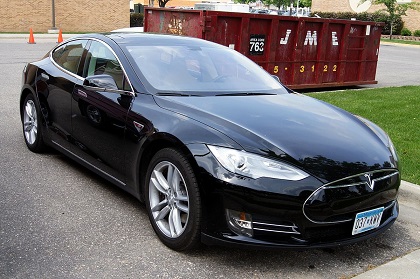
Elon Musk took to Twitter to express his disdain over what he believes is severely one-sided coverage of the latest Model S fire. In three separate tweets, he tweeted:
“Over a million combustion engine (it’s right there in the name!) car fires per year & thousands of deaths, but one Tesla car fire with no injuries gets biggest headlines. Why the double standard? This is a real question.”
“Reality is a Tesla, like most electric cars, is over 500% *less* likely to catch fire than combustion engine cars, which carry massive amounts of highly flammable fuel. Why is this never mentioned?”
“When you read double standard articles about Tesla, please ask why. Maybe there’s a good reason that isn’t obvious.”
Musk is no stranger to gluts of media coverage of Tesla vehicles that have gone up in flames. In March 2018, a Tesla Model X’s autopilot feature caused the car to crash into a median barrier on Highway 101 in Mountain View, California. The car burst into flames with onlookers reporting that the flames were emanating specifically from the battery bank.
In December 2018, a Tesla owner’s vehicle threw up a few errors relating to tire pressure on the highway. The owner had his vehicle towed to a local auto repair place. Soon after, the battery bank caught fire. Firefighters were called to the scene and battled the blaze.
Firefighters reported that they put the blaze out and then monitored the car for another six hours. Once they had left, the car’s battery bank caught fire again. Tesla has now opened a hotline for first responders with specialists who will guide firefighters on how to put Tesla fires out.
Nonetheless, Tesla says that gasoline powered vehicles are eleven times more likely to combust than electric vehicles. They are hoping that the number may reassure the public who are being persuaded against purchasing electric vehicles by their highly publicized fires.
The National Fire Protection Association is the official body that generates the statistics of fire incidents in the United States. The last time they reported on vehicles catching fire was in 2015. The Association reported that in 2015, there were 174,000 vehicle fires reported in the United States - and 99 percent of them were gasoline powered vehicles.
Musk borders on alleging that big oil and car manufacturers have money invested into mainstream media who in turn are focusing on the rare incidents of when electric vehicles catch fire, and ignoring the large number of fire incidents that combustion engines account for.
Electric vehicle fires are something that the electrical engineers at Tesla are still working on. Highly publicized incidents are anything but unfamiliar in the world of new technologies. Samsung developed smartphones that have spontaneously combusted but were able to bounce back from the scandal.
It seems new electric vehicles are just going through the same teething problems.
Works Cited
“How Does The Tesla Model S Ace Safety Tests, But Catch on Fire?” ABC News, ABC News Network, 3 Oct. 2013, abcnews.go.com/Technology/tesla-model-catch-fire/story?id=20462128.
- Details
- Written by: Quintus Potgieter
- Category: Industry
As the world begins to demand increasingly sustainable and renewable methods of power, engineers are having to rise to the challenge to change the routines of established industries that have been operating the same way for hundreds of years.
Some of the oldest trades in the world which have constantly evolved to keep up with newer engineering technologies are eagerly looking to cut down on the amount of emissions they produce.
One of those trades is the art of cheese making.
If you had told a farmer hundreds of years ago as they drained their whey from curds that cheese would be made by renewable engineering technology, they definitely would not have believed you. In the United Kingdom, the first carbon neutral cheese makers are doing just that.
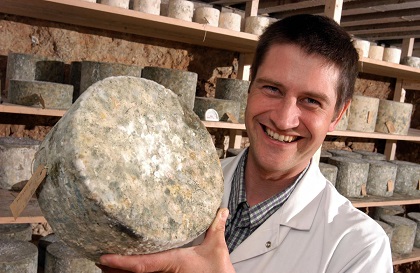
Robin Betts runs Winterdale CheeseMakers in the United Kingdom. The Betts family has been making cheese for over 500 years. If only his ancestors could see the farm now!
Robin explained how the farm’s setup works to website Inverse:
“The great thing about Winterdale is that we use all our own milk from our family farm - but its warm...that’s the crucial thing. And that means, we don’t use any energy whatsoever to start the cheese making. So in the whole cheese-making day, we just need a bit of energy. So what we did to achieve our neutral carbon status was to install solar panels and a ground source heat pump.”
Taking milk straight from the cows to the cheesery also cuts the percentages of energy Winterdale uses, per cheese making effort.
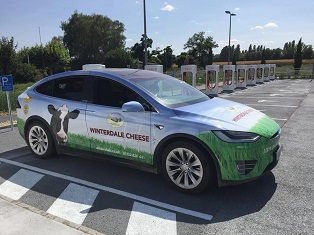
Not only is the cheese made with clean energy, the cheese is also delivered carbon neutrally. Robin charges his Tesla Model X with the solar panels on the roof of the cheesery and then delivers the cheese to London without generating any carbon footprint.
It all makes financial sense for Robin and his team of cheesemakers to keep operations running with renewable energy and he isn’t finished innovating and transforming his farm just yet. He has just unveiled a six-kilowatt wind turbine that will generate even more energy.
To capture the wind energy from the turbine and the solar energy from his panels, he is now utilizing three Tesla Powerwall batteries. Thus, he can power his operations in the morning, noon, and night. There are of course some days that Robin has to pull energy from the grid when the sun is not shining, and the wind is not blowing.
However, Robin says the factory majority of the time is carbon neutral, and that is a success. With the renewable delivery of the cheese, Robin is leading and pioneering a way forward for other farmers out there. Thanks to the engineering of new energy technologies, running a diary and making cheese can become a zero emissions industry.
Works Cited
Brown, Mike. “Tesla Batteries Power This 500-Year-Old Cheese Farm.” Inverse, www.inverse.com/article/54291-winterdale-cheese-farm-tesla-batteries.
“Winterdale Cheesemakers.” Facebook, www.facebook.com/winterdalekent/.
- Details
- Written by: Quintus Potgieter
- Category: Industry
Plagiarism is any creative industry is an incessant problem, allowing people to get away with ideas that are not rightfully theirs. This is particularly evident in China, who is notorious for their knockoffs of products from around the world. However a landmark victory in a recent court case might be changing that as China’s engineering industry is put under the spotlight.
Jaguar Land Rover (JLR) celebrated the victory which is being called a ‘first’ for the global car industry in which they made claims against a Chinese automaker inside a Chinese court and won.
It all started when JLR sued Jiangling Motors Corp in 2016. The Chinese automaker has just released a car named the Landwind X7. It seemed to look eerily similar to JLR’s Evoque.
JLR charged the company with lifting their intellectual property. The Beijing Chaoyang District Court ruled that the side-body design, window outlines, and front and rear lights were all lifted and copied by Jianling Motors.

JLR said in a statement: “We welcome this decision of the Beijing court, which further strengthens our confidence in investing in China and in the fairness of intellectual property adjudication in the Chinese courts. This ruling is a clear sign of the law being implemented appropriately to protect consumers and uphold their rights so that they are not confused or misled, whilst protecting business investment in design and innovation.”
The court ordered all production of the Landwind to stop effective immediately.
However, not all engineers who see their work copied are as successful in stopping or have the means to stop the copycat engineering when they see it arise.
A multi-industry problem
The Verge reports that counterfeit products cost United States’ businesses at least $600 billion USD in 2017. They spoke to the founder of a tech company that launched a self-titled product named ‘Pressy’.
Pressy was a device that would plug into the headphone jack of most smartphones and send command signals to the phone on the press of a button.
When choosing to fundraise through crowdsourcing platform Kickstarter, the founders of Pressy could not have anticipated that they could be opening themselves up to copycats who were ready to steal their idea.
Suddenly, the engineers behind Pressy began to see a Chinese website use images of their product and begin a crowdfunding campaign of their own for the same product. That product turned out to be an exact copy of the Pressy technology that Nimrod Back, CEO and Co-Founder of Pressy invented.

The Chinese copycat fundraiser campaign reached its goal and beat the initial inventors of Pressy to the market with an idea that was originally theirs. Another Chinese company bought the Chinese copycat company and turned his version of ‘Pressy’ into a mainstream item in the smartphone market in China.
Soon after, major smart technology company Xiaomi released their own Pressy-like button. Upon further inspection, the inventors of Pressy discovered that the phone manufacturer was using the exact factory the founders of Pressy did, and were making a knock-off on the same machines that had been earmarked for the production of Pressy.
The idea of suing a company as large as Xiaomi was just not economically viable for a company as small as Pressy. The engineers chose to move on and sell as many of their own version as they could.
Specialist advisory companies are now rising up to help engineers and the like protect their assets from being exploited by copycats. Dragon Innovation is one of those companies. Scott Miller the CEO and co-founder of Dragon Innovation spoke to the Verge. He said that a product is made up of three components that each have their own vulnerabilities. He says these components are ‘electrical, mechanical, and software’.
“Mechanical is really tough to protect. Anybody with a laser scanner can basically recreate in CAT pretty quickly. Electrical is a little harder to protect. But, if somebody is motivated they can actually take an X-ray machine and X-ray all your traces and be able to re-create the printed circuit board or figure out what components you have selected even if you wipe off the silkscreen.”
“And then the third system, software, is the one that I always choose to protect because, in some ways, it’s the easiest to rip off if you can copy it, but it is also where most of the IP [intellectual property] lives.”
Engineers are encouraged to take out design patents on products they engineer as a form of protection against copycats. However, chasing copycats with the law is an expensive endeavor. Engineers are consequently encouraged to get as close to launch as possible without publishing the details of their product.
Works Cited
Davies, Rob. “Jaguar Wins Landmark Case against Chinese Copy of Evoque Model.” The Guardian, Guardian News and Media, 22 Mar. 2019, www.theguardian.com/business/2019/mar/22/jaguar-land-rover-wins-landmark-case-against-chinese-evoque-copycat.
“A Gadget Maker's Worst Nightmare...” YouTube, 2 Apr. 2019, youtu.be/7m2K9f6vjgU.
- Details
- Written by: Quintus Potgieter
- Category: Education
On a mild autumn day on the 26th of April 2019, the Engineering Institute of Technology hosted a seminar in Midrand, South Africa. Inquisitive, prospective engineers gathered to learn how EIT’s unique Australian qualifications, which are driven by industry, can transform engineering careers.
Dr Steve Mackay, Dean of Engineering, streamed in from Australia to introduce the session and respond to some questions. He spoke of EIT’s academic pathways which can be accessed by students directly from school or by artisans and tradesmen and women. He explained how students graduate as engineering technologists and then, if desired, professional engineers. The Dean also spoke of his belief in the power of automation in our modern era. He said:
“Your studies, your job, your career, and your life will be changed by automation. This is where EIT and you come into the picture. We are in a hyper-connected world. Everything is becoming software driven, and we are bringing engineering education into that realm and into this globally digital world. We are in the Fourth Industrial Revolution. We can see it in action, and we want students to get the necessary skills required for the technologies defining the oncoming industries of the future.”

Steve stated that technologies, and the fusion of technologies, are impacting the planet across first and third world economies. And EIT’s International Education Manager for the regions of Africa and South America, David Gadjus, went further, explaining how industrial automation is transforming engineering across all disciplines and across the globe. He also drew on his experiences travelling across the continents, saying:
“Some people ask if engineering is a dead-end. Categorically not, engineers have always been in demand. Even in the bad times, even when there is a recession. You will never really look back. The only challenge is that you must keep building on your knowledge and career; there are a huge number of jobs we do not even know about yet. We have to grab the opportunities by the horns.”
One of EIT’s Course Advisors, Kamohelo Tsotetsi, gave clarity at the seminar on the several Accords that EIT has acquired and which formalise the global relevance of EIT’s qualifications. He said:
“We have courses accredited under the Dublin, Sydney and Washington Accords. We are an institution that allows you to - while you are working and gaining experience in industry - study towards your future career goals. Alternatively, if you are just graduating from school, you can apply to join our Bachelor degrees. There are options and pathways to unlocking your future - and we are here to help.”

David Gadjus rounded off the seminar by espousing EIT’s on-campus studies in Australia. It is another option for eligible South African students, for those who would prefer to study abroad. EIT delivers five higher education qualifications on-campus in Perth, Western Australia:
- Master of Engineering (Industrial Automation)
- Bachelor of Science (Mechanical Engineering)
- Bachelor of Science (Industrial Automation Engineering)
- Bachelor of Science (Electrical Engineering)
- Bachelor of Science (Civil and Structural Engineering)
The attendees at the seminar were intrigued by the prospect of acquiring Australian qualifications in engineering whether studying from home in South Africa, using EIT’s live and interactive online platform of learning, or on-campus in Australia.
With South Africa being a moment away from an election, job creation, the Fourth Industrial Revolution and skills development are hot topics.
Are you looking to work your way up towards a rewarding and mobile career in Engineering? Or do you require professional development in an already established career? Enquire about EIT’s diverse range of online courses and the on-campus degrees that are available today.
- Details
- Written by: Steve Mackay
- Category: Blog - Steve Mackay
Dear Colleagues
With the rapid technology change occurring today resulting in tremendous career opportunities, there are increasing stories of engineering professionals changing their careers. There is always a huge risk when you change – you could be currently working in a great job paying well and you decide to change because you perceive there are better opportunities and perhaps, more exciting technical challenges. There is certainly a huge amount of change occurring in the engineering and technology areas with the strong growth of artificial intelligence, machine learning, increasing use of software in every endeavour, Internet of Things, drones, autonomous cars…..the list goes on and on.

A few suggestions if you are in this position and thinking of change.
Carefully research the industry you are considering moving to. This means looking for real business trends in that industry – rising investment, major announcements, positive company results, share prices of companies and naturally job adverts. If there are only a few scattered announcements of growth in this area, there may be some unpleasant risks awaiting.
Examine Learning and Training Opportunities. Look for educational support for your move into these areas. Books, magazine articles, web sites and videos in this industry should be voraciously consumed on a daily basis. Courses presented by companies – generally in an online or very convenient classroom format are good. Or simply mentoring from colleagues working in this new area. The trick is also to gain some hands-on practical experience rather than simply theoretical knowledge. Traditional institutions may not always provide up-to-date educational support in new technology areas.
Use Synergies. You would surely have many skills from your current engineering career which you can build into your new one. Such as broad technical knowledge, quantitative skills and project management skills.
Getting into the New Industry. Look for ways of meeting up others working in this new industry. This means joining industry groups and networking with professionals working in this new area.
Put a Plan Together. This should be an action oriented plan over many months – perhaps as long as a year - on how to achieve your transition to your new career. Ensure you have full support from your family and friends – communicate carefully to them why this is going to benefit you and them. It is always hard to articulate these reasons but good to discuss with all and sundry.
Finally - build an outcome from your research, skills development and networking that enables you to be headhunted by a few high quality companies.
Amelia Earhart – that remarkable female aviator was quite right: The most difficult thing is the decision to act, the rest is merely tenacity.
Yours in engineering learning
Steve
- Details
- Written by: Quintus Potgieter
- Category: Developments
The Port of Ngqura is a deep-water port located on the east coast of South Africa, 20 kilometers north east of Port Elizabeth. Not only is it South Africa’s newest port, but it is also the only port in the country with green status. The Transnet National Ports Authority (TNPA), who owns the Port of Ngqura, says they won the ‘green’ title by perfectly mimicking nature.
Their key to success is in the way they dredge sand - among other things. Dredging 240,000 tonnes of sand per year is no easy feat and a problem any port has to tackle. However, using nature as their inspiration, engineers have figured out how to do it around the clock and in accordance with environmental standards.
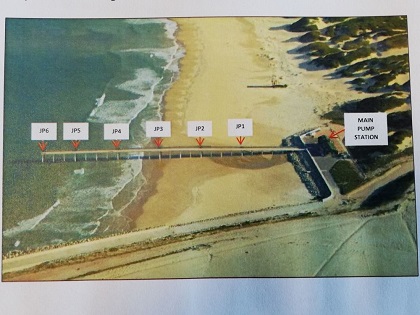
Ports have to be constantly dredged in accordance with the Convention on the Prevention of Marine Pollution by Dumping of Wastes and Other Matter 1972. There are multiple reasons for dredging in South Africa according to TNPA:
- Some of the ports have rivers running into them. These rivers bring silt into the port which compromises port depth;
- The movement of ships within the port creates high and low spots due to propulsion i.e. the ship’s propellers cause the sea bed material to move.
- The effect of Littoral drift or longshore movement of sand. This occurs primarily on the east coast of the country where the prevailing winds and currents cause a northward movement of sand, so sand flows up the coast. To counter this and to mimic the natural movement of sand, Dredging and Services creates sand-traps.
Preventing a buildup of sand and allowing ships to enter and exit the port with ease is very important work. Port operators can face a fine of R10 million ZAR ($698,200 USD) for slacking on their dredging maintenance. Luckily, the Port of Ngqura has an ace up its sleeve.
It is not only the only South African port to have green status, but it is also the first port in the world to have a fixed jet pump sand bypass system. This automated system mimics the way in which sand naturally drifts and carries, keeping the port clean of sand buildup.
This system is leading to better coastal management in general for Port Elizabeth. However, the system requires oversights from engineers.
Freddie Melikhaya, Mechanical Engineering Technician leading the sand bypass team said:
“The system requires a rigid maintenance program which keeps it going 24 hours a day, seven days a week. The port had to develop and refine maintenance, standby and recovery plans in time to counteract the temporary shortfall as a part of a continuous improvement process. This included making provision for unplanned maintenance, daily planning and scheduling and improving maintenance techniques - all remaining within budget.”
The port also partakes in many other biodiversity conservation programs that protect some of the underwater plant life indigenous to the area. The Bayworld Center for Research and Education monitor fish populations in the area. These intensive operations are proving that South Africa’s ports are fully capable of world-class operation when compared with the rest of the world.
Mandilakhe Mdodana, Environmental Manager for the Port of Ngqura said:
“This is an achievement as we are complying with the Record of Decision (environmental legislation) which stipulated the strict conditions to be adhered to in the development of a port of this nature in an environmentally sensitive area. The Port of Ngqura is the only port in South Africa to have a Record of Decision for its construction and operation. This means that it is the only port that was subjected to environmental legislation during its entire development, operation and will be during its future development.”
Works Cited
“Unique Port Sand Bypass System at Port of Ngqura Mimics Nature Successfully.” Ricochet News, www.rnews.co.za/article/24113/unique-port-sand-bypass-system-at-port-of-ngqura-mimics-nature-successfully.
“Welcome To.” Home, www.transnetnationalportsauthority.net/Pages/default.aspx.
- Details
- Written by: Quintus Potgieter
- Category: Student Stories
Douglas Black is a graduate of the Engineering Institute of Technology. He recently completed his Advanced Diploma of Industrial Automation and was a perfect candidate for online education and training.
Douglas currently works in the iron ore mining industry. His daily responsibilities include controlling one of the world’s largest bulk ore loading facilities — which pertains to control system governance, fault finding and general maintenance, and productivity improvements.
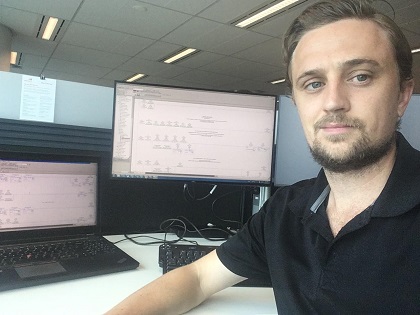
Douglas left school halfway through twelfth grade to start an apprenticeship as an Electrician in the Mining Industry of Western Australia. He said:
“At this time I was living in Kalgoorlie. It’s the heart of the Goldfields in Western Australia. Most boys my age were encouraged to get apprenticeships as at this time the mining industry was booming and there were plenty of jobs.”
After he finished his apprenticeship in Kalgoorlie, he began working on a fly-in fly-out (FIFO) basis on projects in Pilbara, the iron ore mining capital of the world. During this period he grew to love the control system side of the trade: PLCs, motor control, and automation.
After several years of working in iron ore, he began working for world renowned, global mining group Rio Tinto at Argyle Diamond mine.
“This is where I decided I wanted to further my education and move into engineering. My supervisor at the time was completing distance education and strongly recommended I do the same to chase my passion. I began an Advanced Diploma of Automation.”
He then moved to Port Hedland and began working as a technician for BHP. During his time there, he utilized EIT’s novel online education and training system to work towards graduating and acquiring his qualification. On his days off, he would work with the Control Systems Engineering team at BHP Port Hedland - learning more about the industry he found himself in.
After he completed his Advanced Diploma, and with the experience he gained with the Control Systems Engineering team, he applied to be a Control Systems Engineer in the company. He was chosen for the role and has been in that position for the last year. He said:
“I’ve found the Advanced Diploma helped greatly, not only by assisting me get the job I do now, but assisted me in learning in all areas of the controls world, including communications protocols, which until then I had very little exposure to. It has helped me in my day to day activities as well.”
He has since begun his Bachelors of Science in Industrial Automation through EIT and is expanding his skills in his ever-growing career. Douglas’ fascination with automation is not over; he believes it will make a safer and more productive workplace. Douglas concluded:
“I always loved to be challenged. One of my earliest bosses told me, ‘the day you stop learning should be the day you die’. I feel there is no better career to be in that makes that quote stay true. I’ve now got the job that I have been aiming for, but didn’t think it was achievable for another 5 to 10 years. I am in love with my work.”
- Details
- Written by: Quintus Potgieter
- Category: Industry
It survived the French Revolution and two world wars. The landmark is part of Paris’ soul, embodying the city’s history and partially shaping its identity through its religious and architectural significance. The Notre Dame de Paris, a jewel in the French crown, and a marvel of civil engineering, has suffered extensive damage due to fire.
The stunning monument has stood for over 850 years, which made watching it go up in flames so quickly on live television all the more devastating. It has seen much of Paris’ story unfold; the coronations of both Henry IV of England in 1431 and Napoleon Bonaparte in 1804 took place within these walls. Famous French author Victor Hugo set his 1831 classic “The Hunchback of Notre Dame” here — the book is one of the reasons the cathedral got its much needed renovations in the nineteenth century.

Work began on the Notre Dame in 1163, when Pope Alexander III laid the foundation on the ruins of past churches. The structure was not completed until 1345. During that time, the structure underwent four stages of construction. The last sections to be built were the iconic gallery and two towers.
However, the spire that fell during the blaze was not a part of the original medieval work, but instead a result of the nineteenth century restorations. At the same time, the façade we’re all so familiar with was created — 50 years earlier the original exterior was heavily defaced during the French Revolution.
In the current day, it is the most visited monument in the French capital, with 13 million people flocking to see it every year. It is also home to centuries-old relics and artwork.
The conflagration occurred on Monday the 15th of April, shortly after the cathedral had closed for the day. While the official cause is not yet known, experts have speculated the current renovations could be responsible.
The spire, which was the main focus of the US $6.8 million renovation, was ravaged by flames. Contained inside it were relics from the patron saints of Paris; Saint Denis and Saint Genevieve. Two-thirds of the roof and the interior’s wooden structure were also significantly damaged.
Amazingly, French Culture Minister Franck Riester said the significant artworks stored within the cathedral were saved, including the organ, the crown of thorns said to be worn by Jesus, and Saint Louis’ tunic.
Copper sculptures of the Twelve Apostles and four New Testament evangelists had been removed from the spire merely days before the blaze for restoration works. This means they remain unscathed.
The cathedral’s spokesman Andre Finot confirmed the irreplaceable stained-glass rose windows were still intact.
"It's a bit of a miracle. We're very relieved," he told BFMTV.
The famous gargoyles on the outside of the cathedral were a significant feature of the structure. In fact, they were created to drain water of the roof to protect the stone from damage. While they have suffered some damaged, they are believed salvageable.
While standing in front of the still-burning monument, French president Emmanuell Macron told reporters, “Notre Dame is our history, our literature, part of our psyche, the place of all our great events, our epidemics, our wars, our liberations, the epicenter of our lives.
“Let's be proud, because we built this cathedral more than 800 years ago, we've built it and, throughout the centuries, let it grow and improved it. So I solemnly say tonight: we will rebuild it together."
He has since pledged to rebuild the cathedral within five years. However, architectural conservation experts have said it could take triple that time.
Prominent French conservation architect Pierluigi Pericolo said it could take between two and five years just to ensure the structure is stable.
"It's a fundamental step, and very complex, because it's difficult to send workers into a monument whose vaulted ceilings are swollen with water," Pericolo told France-Info.
"The stone can deteriorate when it is exposed to high temperatures and change its mineral composition and fracture inside."
- Details
- Written by: Isabella Foster
- Category: Industry
Taking a high-rise structure from concept to completion is no easy task — structural and geotechnical engineers usually face an array of design-related challenges. From vulnerability, to seismic activity, to understanding the risks of underlying soils, designing a tall building is a feat within itself.
However, engineers in Kenya can rejoice as The Britam Tower in Nairobi has been named as having the best in mechanical and electrical engineering by The Council on Tall Buildings and Urban Habitat (CTBUH).
The CTBUH recently announced their winners of the Best Tall Building Worldwide and Category Winners at the 16th Annual CTBUH Awards Program, which recognizes projects and individuals that have made significant contributions to the advancement of tall buildings that also achieve sustainability at the highest level.

The Britam Tower, which is the tallest building in Kenya, beat four other projects to the prize, including the Salesforce Tower in San Francisco who won the overall category prize.
Judges were impressed by the buildings rainwater harvesting, ventilation strategies and heat mitigation strategies that save 39 percent on energy bills and 50 percent on water use when compared to the typical high rise building.
“The veil facade solution, consisting of 50 million square ceramic rods in front of a full-height glass curtain wall with selective glass, lets in significantly more light than heat”.
The brains behind the sustainable solutions were chapmanbdsp, an independent design and engineering consultancy based in London. Ian Duncombe, Board Director at chapmanbdsp, accepted the award and said:
“We were up against some really stiff competition...this is a fantastic achievement for the project and for chapmanbdsp in front of our peers on a global stage”.
It’s not the first achievement this Kenyan tower has achieved; it was also the first building in Kenya to receive EDGE (Excellence in Design for Greater Efficiencies) certification, a recognition awarded to building owners who demonstrate a high level of resource efficiency in their buildings.
Working with Gapp Architects, chapmanbdsp engineered a wide variety of solutions within the tower, from powerful solar control to natural ventilation for the office floors. A spokesman for Britam said:
“We are so proud to see our vision realised by the whole team. The work chapmanbdsp did on environmental solutions answered the brief and fully transformed the project”.
“We have been given a legacy we can all be proud of”.
- Details
- Written by: Elyse Simich
- Category: Industry
Scientists believe if we’re going to combat climate change, we need to electrify all forms of transport. In fact, according to the International Civil Aviation Organization, the demand for air travel by 2050 could increase aviation sector greenhouse gases by 700 per cent compared to emissions in 2005.
As it stands, aviation is responsible for two percent of the world’s carbon emissions. While at cruising altitude, conventional aircraft release nitrogen oxides into the atmosphere, which also have a harmful effect on the environment.
Therefore, it’s critical for engineers to find a way to decarbonize aircraft.
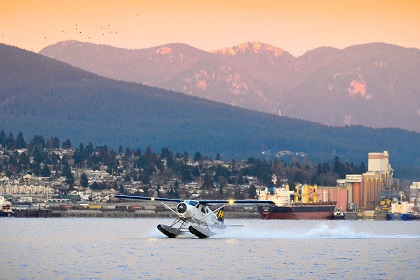
Professor of energy and transport at University College London Andreas Schäfer said, “If you look at the opportunities for reducing aviation CO2 that have been looked at for a long time, then you’re running out of options. The potential for reducing CO2 emissions is not sufficiently strong in comparison to the growth rate of air transport.”
So what are the options? Well, some airlines are experimenting with biofuels, which are theorized to be carbon neutral. However, the cost of using biofuels is high. The other option is electrification.
Last year Norway declared they’re aiming for all domestic travel to be electric by 2040.
In March, Canadian seaplane airline Harbour Air announced they were working with an electric drivetrain manufacturer to retrofit existing aircraft with a battery-electric propulsion system. Harbour Air has a fleet of 42 seaplanes that travel 12 routes. This collaboration with magniX means they expect the first electric flight to take to the skies in 2022.
One of the biggest issues with battery-electric propulsion is the battery life. Currently, the best lithium-ion batteries have a specific energy of 250 watt-hours per kilogram. For aircraft the size of a Boeing 737 or Airbus A320 to travel up to 1100 kilometers, the battery would need a specific energy of 800 watt-hours per kilogram. In comparison, jet fuel has a specific energy of 11,890 watt-hours per kilogram.
One of the reasons Harbour Air is confident they can pull this off is because all of their flights are less than 30 minutes in duration, which means the battery-life limitations aren’t a concern. In fact, the company will significantly cut their costs by making the switch. A regular motor costs between US $300 and $450 per operating hour. The electric motor will cost only US $12.
However, Schäfer estimated that long haul flights won’t be electrified until the middle of the century, given that battery energy densities have been increasing by three to four percent each year.
“It is certainly a long way, but because the time scales of aviation are so long, [airliners] tend to live for 20 to 30 years, we need to start looking at these technologies now so they’re available in 2050,” he said.
Schäfer also said that while hybrid-electric aircraft are a potential stepping stone to fully electric aircraft, they still produce greenhouse gases and rely on cheap, yet powerful batteries.
NASA is building the X-57 Maxwell, the first all-electric X-plane. It features a slightly different design to most propeller-driven planes.
Principle investigator for the X-57 at NASA explains Sean Clarke, “For this scale aircraft, one of the driving design considerations is the landing and takeoff performance. Our wing has the cruise propellers at the wingtip, and that reduces the drag of the wingtip. We also have 12 small propellers that are distributed across the leading edge of the wing. That increases the lift at low speed.”
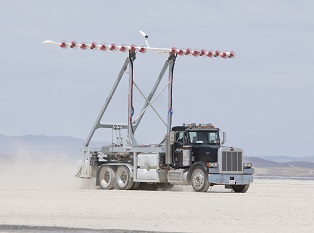
Since take-off and climbing to cruising altitude require a lot of energy and lift, conventional aircraft feature a large wingspan. However, that extra surface area adds drag and makes cruising less efficient. Electric motors are much cheaper and are less mechanically complicated since they don’t require fuel lines, valves and exhaust systems.
The 12 small propellers are switched on allowing the wing to be much smaller than it is on a conventional aircraft. This saves energy during the flight, by reducing drag.
Clarke said electric aircraft could change airline business operations, as the electric motors can allow for almost vertical takeoff and landing, rendering long runways unnecessary.
“There’s a lot of urban air mobility targets where different air framers and operators are advertising a future where you can take an air taxi from somewhere in a metropolitan area to somewhere 10 miles away and fly over all the rush hour traffic,” he said.
“It is really exciting because it’s starting to grow pretty quickly around the technologies that we’re already working with.”
- Details
- Written by: Elyse Simich
- Category: Developments
Flying cars could be the key to lowering carbon emissions through sustainable transport in the future, according to a new study.
The University of Michigan has found while flying cars — which are technically called electric vertical takeoff and landing aircraft, or VTOLs — are not justifiable for short trips, they have a niche role in sustainable transport for trips further than 100km.
The researchers also found that flying cars could be crucial to reducing congestion in big cities. According to the authors of a joint study from the University of Michigan’s Centre for Sustainable Systems and the Ford Motor Company, this would involve a flying ride-share taxi service.
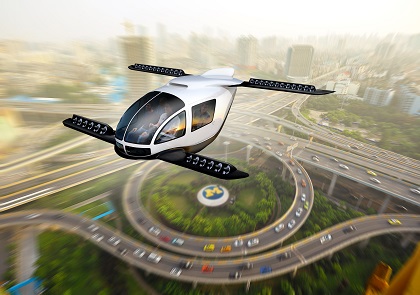
For example, a fully loaded VTOL with a driver and three passengers would produce less greenhouse gas than a regular car, which carries 1.54 people on average. The study found they produced 52 per cent less emissions than gasoline vehicles and six per cent less emissions than electric vehicles.
Senior author of the study Gregory Keoleian said, “To me, it was very surprising to see that VTOLs were competitive with regard to energy use and greenhouse gas emissions in certain scenarios. VTOLs with full occupancy could outperform ground-based cars for trips from San Francisco to San Jose or from Detroit to Cleveland, for example.”
Not only are flying cars more sustainable for long journeys, unsurprisingly they’re also a faster way to travel. The study noted that the point-to-point flight path and higher speeds resulted in a time saving of 80 per cent, compared with ground based travel.
Engineers are currently facing the challenge of meeting a growing demand for convenient transport, while reducing carbon emissions and congestion.
While electric cars and automated driving may achieve some of the goals in terms of reducing carbon emissions, they would contribute to the congestion problem. Researchers believe VTOLs could provide a solution, in the form of a piloted ride-share taxi service.
First author of the study Akshat Kasilwal said, “Not only is high passenger occupancy better for emissions, it also favors the economics of flying cars. Further, consumers could be incentivized to share trips, given the significant time savings from flying versus driving.”
During the study, the research team used computer simulations to compare three types of vehicles: the conventional internal combustion engine vehicles (ICEVs), battery-driven electric vehicles (BEVs) and VTOLs.
The scientists analyzed the five phases of VOTL flight: take-off, climb, cruise, descent and landing. They found that while lots of energy was expended during take-off and landing, it produced no greenhouse gas as it cruised at 240kph. However, the batteries would require electricity to be generated by a power plant.
For trips shorter than 35km, single-occupant conventional ICEVs were more sustainable to run. This is significant as the average commute in the US is 17km.
Co-author of the study Jim Gawron said, “As a result, the trips where VTOLs are more sustainable than gasoline cars only make up a small fraction of total annual vehicle-miles traveled on the ground. Consequently, VTOLs will be limited in their contribution and role in a sustainable mobility system.”
Several aerospace companies — such as Airbus, Boeing, Joby Aviation and Lilium — and agencies such as NASA are developing VTOL prototypes. The critical efficiency enabler for these aircraft is distributed electric propulsion, or DEP, which involves the use of several small, electrically driven propulsors.
Uber to take to the air in 2023
Uber’s Elevate team is also building a prototype for aerial ridesharing called uberAIR. They are utilizing electric VTOL technology in the hopes of developing infrastructure for a VTOL network, according to a whitepaper from the program’s launch in October 2016.
Uber said this network would be significantly more cost efficient than building heavy infrastructure such as rail, roads, bridges and tunnels. Additionally, it would revolutionize commutes; instead of following fixed routes, VTOLs would travel independently of a specific path. This would significantly reduce congestion, and single-event interruptions causing delays.

Currently, helicopters are the closest form of transport to VTOLs, but they are too noisy, too expensive and emit too much carbon. VTOLs, on the other hand, are ahead in each category. They are also likely to be safer; they won’t depend on a single part to stay airborne and will use autonomy technology to reduce operator error.
In the whitepaper, Uber suggests VTOLs will prove to be an affordable form of daily transport for the masses, and may be even cheaper than owning a car.
So how will it work? They plan to launch uberAIR in three different cities. Two have been selected: Dallas-Fort Worth, Texas and Los Angeles, California. The third will be announced later this year; a city in one of the following countries: Australia, Brazil, France, India or Japan.
The VTOLs will rely on Skyports, located on the tops of buildings. According to Uber, the top names in architecture, design and engineering are working on an all-new design to accommodate up to 1000 takeoffs and landings per hour.
Uber said they hope to start testing these networks in 2020, via the operation of demonstrator flights. Commercial operations are expected to begin in 2023.
- Details
- Written by: Isabella Foster
- Category: Industry
Judith Resnik never planned on being an astronaut. Her dreams were initially set on being a professional concert pianist. However, in the end, she was neither. Resnik was an American electrical engineer, software engineer, biomedical engineer, pilot, the first Jewish American in space and the fourth woman in space.
Born in 1949 to Sarah and Marvin, both Jewish immigrants from Ukraine, Resnik grew up in a simple home in Akron, Ohio. Her father was an optometrist and her mother a former legal secretary; however, they would divorce when Resnik was just a teenager.
With a fond crush on Tom Selleck and an infamous halo of dark hair, Resnik excelled at many things throughout her life. An outstanding student, she shone in areas of mathematics, languages and music. She would go on to earn a perfect score in her SAT exams.
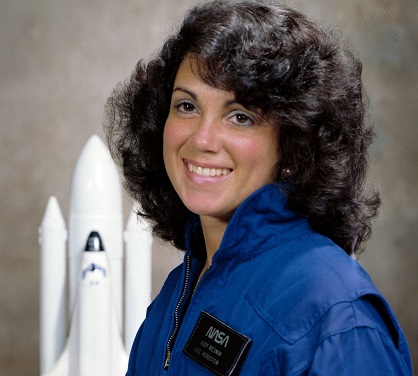
Resnik pursued studies in mathematics at Carnegie Mellon University, only to develop a passion for electrical engineering after attending lectures with her boyfriend at the time. She would earn her B.S. degree in electrical engineering in 1970.
In 1977, NASA began recruiting minorities and women to the space program. Recruitment had skyrocketed at the time as Nichelle Nichols was working on the campaign. Nichols played Nyota Uhura in the Star Trek series.
Resnik had never shown particular interest in joining the space program but if her childhood had given example to anything, it was that Resnik shone at whatever challenge she put her mind to. In 1978, at the tender age of twenty-nine, Resnik was one of only six women chosen to be a part of the NASA program.
In 1986, the tenth flight of Space Shuttle Challenger was set to take off. This would be Resnik's second space launch and she was to assist in photographing Halley’s Comet. The mission was under a particular media spotlight due to the attendance of a civilian crew member, a teacher from New Hampshire.
After six days of delays, January 28 was unusually cold. Hundreds of people who had gathered on the ground to watch the launch huddled together in blankets and layers of clothing. Behind the scenes, the Ice Team had worked exhaustively over the course of the night removing ice which had gathered on the launch pad. Despite weather concerns, pressure rising from the constant delays resulted in a mission clearance, though it was rushed and tightly contested.
Engines ignited at 11:38 a.m. EST but 73 seconds into flight, in front of hundreds of eyes on the ground and millions on television, Challenger broke apart. All seven crew members were killed.
Judith Resnik died in one of the worst space disasters in history at the age of thirty-six.
However, Resnik’s memory deserves to be much more than her association with tragedy.
Resnik embodies the qualities that make a role model. She is now and always will be an example of human bravery, determination and brilliance. With a passion for science and uncovering the unknown, Resnik’s soul found a home in space. Her passion and curiosity impacted every life she touched.
Despite her story being cut short, let Judith Resnik remind us of what we are capable of, and inspire women studying engineering of what is possible. To quote her father,
“She had the brain of a scientist and the heart of a poet”.
Godspeed Judith Resnik, thank you.
- Details
- Written by: Isabella Foster
- Category: Developments
Until yesterday, every image you have seen of a black hole has been digitally rendered.
Despite being theorized for well over two hundred years and being common knowledge to even those outside the realm of astronomy, it has been all too easy to forget that we have never actually seen one.
Looking a bit like an out of focus doughnut, this groundbreaking first image shows a supermassive black hole found at the center of M87, a galaxy near our very own Milky Way.
The image is composed of a fiery looking halo surrounding a dark center. That center is the black holes event horizon, the point at which the gravitational pull becomes so strong that not even light can escape. The halo around it is a combination of dust and gas, the only thing that makes this image even possible to see.

Sitting 55 million light years from Earth and measuring 6.5 billion times heavier than the sun, this cosmic marvel was captured using eight radio telescopes located around the world. The concept in basic terms was that by having telescopes at different points of the world, scientists would be able to form a viewing array as wide as Earth itself.
Not surprisingly, it has taken a team of 200 international scientists over two years to formulate the means necessary to snap the picture of the unforgiving darkness that controls all space and time around it.
"We have seen what we thought was unseeable," said Sheperd Doeleman, director of the Event Horizon Telescope Collaboration (EHT).
At an even more groundbreaking level, the image matches up with Einstein’s 1915 theory of general relativity; a theory the great scientist himself thought was too wacky to be real.
However, not only is it another mic drop moment for Einstein but this image has opened a new realm of possibility. Astronomers will now more than ever be able to learn more about the stable features of a black hole and maybe even discover what happens to the materials that disappear beyond the inevitable event horizon.
"We are looking at a region we have never looked at before," said Heino Falcke, chair of the EHT Science Council.
"It feels like looking at the gates of hell, at the end of space and time – the event horizon, the point of no return."
- Details
- Written by: Quintus Potgieter
- Category: Industry
Multinational oil and gas corporation Exxon Mobil is working towards a clean energy future. They are embarking on a process of introducing technology into industrial plants that will make them more sustainable into the future.
A new television advert from the company shows that their engineers and scientists are working towards refining carbon capture technology for industrial plants. By replicating the real process of how plants capture carbon dioxide, they are hoping industrial plants and power stations could do the same.
The World Economic Forum is suggesting that carbon capture ‘could be the game-changer the world needs with investment into clean energy technologies being a crucial move. According to the IPCC SR 15 report, investment into clean energy and energy efficiency technology needs to increase ‘by roughly a factor of five’ by 2050 if we are to keep global warming at 1.5 Celsius.
This is especially important for engineering industries as 60% of the world’s carbon emissions come from industrial sites and power plants.
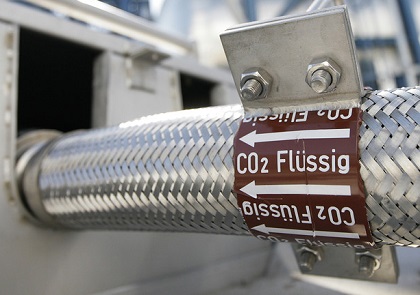
Due to these alarming statistics, investment into carbon capture and storage (CCS) is getting more attention than any point in recent history. Industry experts predict that 90% of the world’s C02 emissions could be captured and stored underground. However, carbon capture has to use energy to capture the Co2, which is problematic in itself.
Brad Page, the CEO of the Global CCS Institute writes:
“The truth is that CCS has much wider applications. It remains the only technology that can deliver deep emissions reductions in hard-to-abate industrial sectors such as steel, fertiliser and cement. Decarbonizing these sectors is not simply about electrifying them with zero-carbon power; most of these processes require either carbon in their chemistry or high heat input, neither of which electricity is able to provide.”
Carbon capture technology can be fitted in industrial plants and power stations to reduce the amount of emissions. Even a historically fossil-fuel driven company such as ExxonMobil, recognizes the importance of doing their part towards change for a sustainable future.
Dr Faith Birol, Executive Director of the International Energy Agency said:
“Without CCS as part of the solution, meeting global climate goals will be practically impossible.”
Further emission reductions
ExxonMobil has been hard at work for the last decade, trying to bring about the future of biofuels. By mass-growing algae’s they hope it will turn into low-emissions biofuels that can reinvent the transportation industry.
On their Twitter page, they highlighted the work they have been doing in the biofuel industry with this timeline:
2009: ExxonMobil joined forces with Synthetic Genomics Inc to create the renewable energy of the future.
2010: Opened a greenhouse at La Jolla, California Campus. Inside that greenhouse Exxonmobil scientists would begin growing algae.
2017: ExxonMobil reports they have made a breakthrough. They say they have discovered a fatter, energy-rich algae strain.
2018: They moved to an outdoor facility at SGI’s California Advanced Algal Facility. This was done to test how large a scale they could grow algae at.
2025: By this year they aim to reach the technical ability to produce 10,000 barrels of algae biofuel per day.
Algae Research Technician at ExxonMobil, Megan Ruhmel explains:
“Algae’s create three things: proteins, sugars and fats. The fuel is actually going to come from the fat part of the algae. Normal algae strains don’t make enough fat for us to get fuel out of. So, we want to make them even fatter than they already are so we can grab the oil from the fat.”
Works Cited
Page, Brad, and Global CCS Institute. “Why Carbon Capture Could Be the Game-Changer the World Needs.” World Economic Forum, www.weforum.org/agenda/2019/03/why-carbon-capture-could-be-the-game-changer-the-world-needs/.
Singapore, ExxonMobil. “We've Had Many Proud Moments on Our Nearly 10-Year Journey to Convert Algae to Low-Emission Biofuel. Here Are a Few of Our Favorites. #UnexpectedEnergy Pic.twitter.com/wPrh0fdiYA.” Twitter, Twitter, 7 Feb. 2019, twitter.com/exxonmobil_sg/status/1093328492857569280.
- Details
- Written by: Quintus Potgieter
- Category: Industry
The Paris Climate Agreement is ringing alarm bells for engineering industries around the world. The message of the agreement seems clear: transition or die. Extreme weather events, rising sea levels, smog pollution and deforestation issues are no longer something we can undermine.
Australia was one of the participating nations who signed the Paris Climate Agreement in 2015. The Australia Labor Party made a promise to the public that they would cut emissions by 26 percent by the year 2030 if put into power in the next election.

Despite the promise, many are concerned that the party will be all-talk and no action. It seems targeting emissions in all levels of Australian society is a bigger task than the government anticipated as Australia’s emissions have actually been rising.
What is actually being done?
Australia has shown some promise in the photovoltaic sector. There are a significant number of utility solar projects run by both government and business, plus citizens utilize rooftop solar to a noticeable extent.
With so much open space in Australia, many photovoltaic array farms are set up and have been put to work generating electricity. One of those farms being the Bungala Solar Farm. It is currently Australia’s biggest solar farm, currently producing 220 megawatts of electricity.
Another solar farm is also on the way in the Riverina region. The Yarrabee Solar Farm is expected to push out 900megawatts, enough to power one million homes.. It will be located in Yarrabee Park, located in the southwest of New South Wales. The state has been inundated with solar farm projects seeking approval from the government - reportedly 70 projects are waiting to hear if they are eligible to build new solar farms.
Australia’s renewable energy sector is thus more progressive when compared to some other countries, but there is still a long road ahead in the gradual transitioning to cleaner technologies.
More engineering innovation has to happen in almost every industry in Australia in order to make a significant contribution to lessening their carbon footprints. Australia’s emissions from largest to smallest in terms of carbon contribution are as follows:
- Electricity
- Industry
- Transport
- Agriculture
On ABC television network in Australia, the Four Corners investigative journalism program ran a story entitled: Is Australia on track to meet its Paris target?. They pointed out that 19% of Australia’s emissions come from vehicles.
They spoke to The National Roads and Motorists’ Association (NRMA) who said that there should be a ban on new petrol and diesel vehicles as soon as 2025. They also indicated that electric vehicles only accounted for 0.2% of car sales in Australia last year.
They want to see government lead by positive example by using electric vehicles in their own fleets.
What are communities are doing?
Dr Matthew Nott, a local doctor in Tathra, a seaside town in New South Wales, is working to promote renewable energy by highlighting the substantive economic opportunity renewable energy poses. He has founded a community group named Clean Energy for Eternity.
“I hear the excuse all the time that Australia is only worth one percent of the global emissions, so why bother doing anything about climate change? In Tathra, my back of the envelope calculation tells me that we’re worth 0.0005 percent of global emissions. So, we’re a very small part of the problem, but we want to be a big part of the solution.”
The community group got clearance from Tathra to paint a message on one of the local water towers that read: 100% by 2030. The community is trying to be powered by 100% renewable energy in 2030.
The moral of the story seems to be just this: reaching the stringent climate change goals of the Paris Agreement will be an increasingly collaborative effort between government, business and civil bodies.
If all can work together, Australia may just go down in the history books as being a world leader in the renewables sector, and teach the most powerful states a thing or two.
Works Cited
“Is Australia on Track to Meet Its Paris Target? | Four Corners.” YouTube, 1 Apr. 2019, youtu.be/YprAjQr1CuU.
March, Stephanie. “Morrison Says Australia Will Meet Paris Climate Target 'in a Canter', but the Data Says Different.” ABC News, 1 Apr. 2019, www.abc.net.au/news/2019-04-01/is-australia-on-track-to-meet-its-paris-emissions-targets/10920500.
VorrathSophie, Sophie. “NSW Waves through 900MW Solar Farm for Construction in Riverina.” RenewEconomy, 14 Jan. 2019, reneweconomy.com.au/nsw-waves-through-900mw-solar-farm-for-construction-in-riverina-77079/.
- Details
- Written by: Quintus Potgieter
- Category: Industry
Engineering legacies are all around us. They are constant reminders of the hard work done by engineers who came before us and how, against all odds, they were able to create incredible industries, build amazing marvels, and improve the world that they lived in.
What kind of engineers paved the way for the industries we know and love today? Well as it turns out, they were no different to the engineering students who are endeavoring to change the world we live in today.
Henry Royce never went to university. He was not from a wealthy background, but he had a knack for engineering. He made a career for himself by fitting into technical roles until he eventually founded a company in 1884 known as FH Royce and Company. They would produce dynamos, electric cranes and other small-sized electrical equipment.
Henry Royce was particularly enamored by the sector of mechanical engineering related to motor vehicles. He would be the driving force behind what would one day become one of the world's most renowned automobile engineering companies.
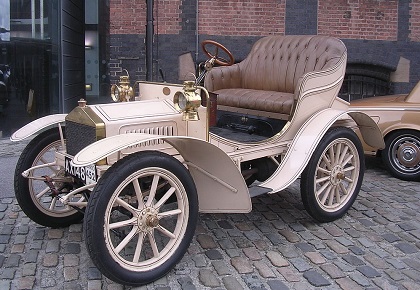
Seeing the world of automobile manufacturing exploding before his eyes, he began work on his own motorcar and called it the Royce. He insisted that every part of the engineering process should never compromise on design or cost - he wanted it to be the best.
So, where exactly does the ‘Rolls’ in Rolls Royce come from?
Charles Rolls was a Cambridge graduate. Being an aristocrat, he loved the finer things in life. His upbringing could not have been more different than that of Royce’s. He too, however, had an affinity for motorcars and was particularly fascinated by the development of aviation.
Charles Rolls met Henry Royce through a mutual friend at the Royal Automobile Club. The friend invited Rolls to see the car Royce had worked on.
He was known to have a preference for four-cylinder cars, whereas Royce's was a two cylinder. But Rolls was sold. From that day onward, Rolls resolved to sell every car Royce engineered. Thus, after a handshake, the Rolls-Royce Company had begun. Royce being the engineer and Rolls as the salesman. A match made in engineering heaven.
In 1904, the first Rolls-Royce 10hp was announced. The Manchester workshops were quickly inundated and could not keep up with demand. They opened more factories in Darby in 1908. The rest is history.
The Rolls-Royce soon became the vehicle manufacturer renowned for the Spirit of Ecstasy mascot fitted to the bonnet and had its rightful place as the most luxurious car in the world.
Alive and kicking
Rolls-Royce is still the brand of choice for the upper class men and women of today. Royce's methodology of never cutting corners and always working with the best materials is currently still in practice.
It is still considered to be the most luxurious vehicle brand in the world. Customers can choose from a range of 44,000 different shades of paint. If customers want a color that isn’t in the 44,000 options, the company will customize the chosen color for the customer.
Rolls-Royce has won the hearts of engineering admirers for their attention to detail. It has made its way into the history book as a British icon. With unparalleled luxury and classic design, everyone knows when they see a Rolls-Royce.

And now, they're leveling up. The company is releasing its first all-terrain SUV called the Rolls-Royce Cullinan. It will bring their kind of luxury into the previously untouched, sturdier class of vehicles.
They're reportedly struggling to keep up with customer demand of the new SUV, with the waiting list currently five months long. According to Car Mag, they have employed 200 employees to meet the demand.
The high demand for Rolls-Royce vehicles speaks to the legacy of Henry Royce and Charles Rolls. It is proof that the hard work and determination that went into the engineering of the many Rolls-Royce vehicles can still be felt 115 years later.
Works Cited
“CULLINAN.” Rolls-Royce Motor Cars Home, www.rolls-roycemotorcars.com/en-GB/cullinan.html.
“Rolls Royce: Dream Machines.” Channel 5, www.channel5.com/episode/episode-1-908/.
- Details
- Written by: Quintus Potgieter
- Category: Industry
World Water Day (22 March) has come and gone - blink and you would have missed it. However, an organization that didn't miss it was The Institution of Civil Engineers (ICE) in the United Kingdom. They used this day to celebrate the civil engineers making a difference in the world of water infrastructure.
ICE hosted an exhibition with real-life engineers, both active and retired, who dressed up as engineering-inspired superheroes. They hosted two exhibitions named ‘Invisible Superheroes' and ‘Water: From Source to Tap.'
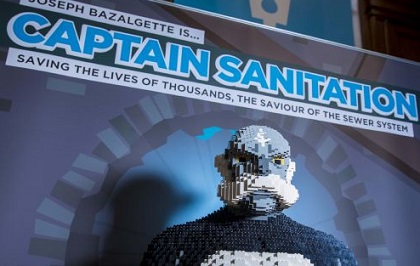
The purpose of the exhibitions was to inform young attendees about career prospects in civil engineering and to speak about the importance of clean water in our future. The ‘superheroes' were there to also inform about threats to the water infrastructure in the UK; mainly, ‘fatbergs and flooding.'
Fatbergs are masses of solid waste that get lodged in sewerage systems. These piles of waste mainly consist of congealed fat which has been poured down household drains and personal hygiene products that have been flushed down household toilets. London's Victorian-era sewer system sees these fatbergs all too often, and civil engineers are who have to deal with them.
After clearing the fatbergs from the sewer system, they are handed over to others in the engineering industry that turn the discarded waste into biofuel. The process is shown in this video:
A company known as Thames Water spends around one million pounds per month clearing fatbergs and blockages from sewer systems in London. Their total of fatbergs cleared nears around 55,000 per year.
Martyn Harvie, a principal engineer appearing at ICE's exhibition as superhero Drainage Dyno told WWT Online said:
“People are prone to ‘flush and forget,' not thinking about the environmental consequences. But responsible water management is vital for a sustainable future. By revealing the secrets beneath the sewers, ICE hopes to warn people ‘Don't Feed the Fatberg’ and raise awareness of all the behind-the-scenes work that civil engineers do to manage our precious water resources.”
Works Cited
“HOW MUCH DO 'FATBERGS' COST THE PUBLIC?” Daily Mail Online, Associated Newspapers, 2 Aug. 2018, www.dailymail.co.uk/sciencetech/fb-6019745/HOW-FATBERGS-COST-PUBLIC.html.
"ICE Launches Exhibition Showing Water's 'Superheroes.'" WWT, wwtonline.co.uk/news/ice-launches-exhibition-showing-waters-superheroes.
- Details
- Written by: Quintus Potgieter
- Category: Developments
Pick-and-place robots are predicted to fully replace factory floor workers in the future. However, before these robots take over the floor, they will have to become more flexible with the objects they can pick-and-place. It all has to do with the robot's ‘vision.'
Making pick-and-place robots ‘see’ the objects they are to be picking up is not easy work. Things can often go wrong when a robot tries to pick up an object it has never encountered before.
However, a team from MIT’s Computer Science and Artificial Intelligence Laboratory developed the idea that they could assign 3D key points which would help the robot identify where and how to pick new objects up. They call their innovation kPAM - or Key point Affordance Manipulation.
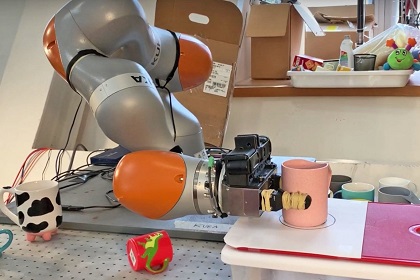
Russ Tedrake, the senior author of the report, wrote:
“Understanding just a little bit more about the object - the location of a few key points - is enough to enable a wide range of useful manipulation tasks..”
The team has successfully managed to get a robot to pick up an object without a fixed template. They say this is done through the novel formulation of ‘category-level manipulation’ using the 3D key points.
“Using this formulation, we factor the manipulation policy into instance segmentation, 3D key point detection, optimization-based robot action planning and local dense-geometry-based action execution. This factorization allows us to leverage advances in these sub-problems and combine them into a general and effective perception-to-action manipulation timelines.”
Their implementation of the system allowed for a robot to be able to pick up a mug and clean a pair of shoes, both without a prior template for the robot to follow.
The team is hoping that kPAM can be useful for more applications than just robot arms in the future. Their research could help transform the domestic robots that one could see in households in the next decades. And they also hope it will continue to assist in the automating of factory floors and the replacing of the more repetitive tasks within them.
Works Cited
“MIT Robot Uses 3D Keypoints for Advanced Coordination.” The Engineer, 18 Mar. 2019, www.theengineer.co.uk/mit-robot-keypoints/?cmpid=tenews_7701303&utm_medium=email&utm_source=newsletter&utm_campaign=tenews&adg=5A0EAC12-A7C5-4FD9-9AA8-84D6979695B5.
“KPAM.” Google Sites, sites.google.com/view/kpam.
- Details
- Written by: Quintus Potgieter
- Category: Industry
A priority of all engineering companies is the implementation of workplace safety and with the development of new safety technologies, industrial environments are closing than ever to achieving accident-free workplaces.
British-Dutch oil and gas company Shell has pledged for the last five years to continually ensure impeccable safety across every level of their company.
It all started with their Goal Zero ambition to achieve no harm and no leaks across all of their oil-related operations and then spread out to their other enterprises. The goal is outlined on their website and says:
“To achieve Goal Zero, we focus on the three areas of safety hazards which have the highest risks for our type of activities: personal, process, and transport safety. We set consistent, high safety standards across Shell and we expect all of our employees and contractors to meet them..."
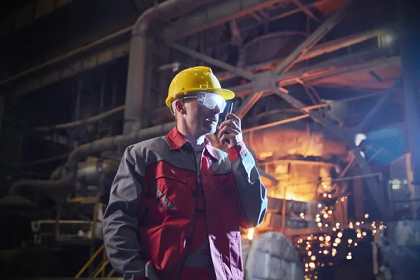
Safety in the Engineering industry is a leading example of teamwork with many companies working together to collaborate on safety standards.
Shell currently shares their safety standards with other trade associations and professional bodies in the sector including The International Association of Oil and Gas Producers and The American Petroleum Institute.
“A strong safety culture is complemented by a competent workforce. We ensure that people responsible for tasks with a significant safety hazard have the necessary training and skills. Our safety experts work in networks to share and implement best practices around the world.”
Safety is something that can always be built upon; companies can help improve their safety by studying part time courses such as the Professional Certificate of Competency in Hazardous Areas that is offered at the Engineering Institute of Technology. These courses are specifically tailored to those working in hazardous engineering environments.
Inquire about which courses have safety modules mixed in by visiting the Engineering Institute of Technology’s website.
IIoT = safety for workers
Industrial environments are usually cardio-vascular intensive environments and made more dangerous with the use of heavy machinery.
To prevent the probability of future workplace accidents, the Industrial Internet of Things is augmenting safety measures in the industrial workplace.
The development of machine learning, artificial intelligence (AI) and physical hardware - like wearables - is helping workers stay safe, and helping companies have more oversight over their workers and machinery than ever before.
Now, IIoT-connected devices are generating safety data, and can even be used in emergency situations. A company that is developing solutions for workplaces with all of this in mind is IBM, who has begun to utilize their AI invention Watson for the purposes of workplace safety in industrial organizations.
Engineering.com spoke to Ishan Sehgal, who is a director for Watson IoT Industry Solutions.
“Worker safety solutions are one of our portfolio products that we have based on Watson IoT platform. The bottom layer is the IoT platform that provides the data connection, data collection, data curation at a device or device data level. Upstream from that is our industry solution, whether it’s around predictive maintenance, which is involved a lot around assets analytics; whether it’s around manufacturing processes, which includes solutions like predictive quality insights (PQI) that looks at industrial processes and analytics around the process or worker insights -- collecting data from and around the worker based on wearables or beacons or other devices in a production environment.”
Works Cited
Maw, Isaac. “Using IIoT-Connected Devices for Worker Health & Safety.” Engineering.com, www.engineering.com/AdvancedManufacturing/ArticleID/18873/Using-IIoT-Connected-Devices-for-Worker-Health-Safety.aspx.
“Our Approach.” Shell Global, www.shell.com/sustainability/safety/our-approach.html.
- Details
- Written by: Quintus Potgieter
- Category: Industry
India’s government is under scrutiny after a bridge collapse in Mumbai left at least six people dead and 36 people injured.
This is the third foot-overbridge tragedy India has seen in just two years, placing a harsh spotlight on the shortcomings of India’s infrastructure sector who struggle to stay up to date with modern practices and maintenance requirements.
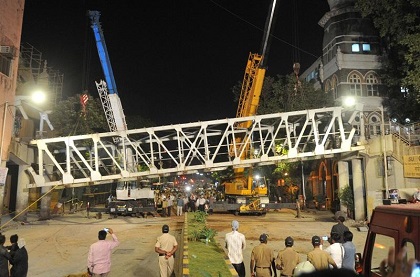
Shirish B Patel, an urban planner and civil engineer, says that what’s happening in the case of the various bridge collapses is a result of hastily appointed designers and engineers who are not necessarily the most skilled but the cheapest to hire.
“Over time the quality of design is sure to degrade, as designers pursue lowering costs and cutting corners rather than enhancing their skills. Salaries are cut, fewer of the brighter students enter the profession, and the downward spiraling cycle continues.”
Just four days after the collapse, Neeraj Kumar Desai of Prof D.D.Desai’s Associated Engineering Consultants and Analysts was arrested for what the Indian Express news service called ‘submitting faulty audit reports to the civic body.'
Mr. Desai apparently neglected to tell official bodies that the bridge was in trouble of collapsing. Re-audits have now been issued for all the bridges in the city.
The issue of aging infrastructure is nothing new and something all countries in the world have to deal with. A recent report by the U.S. Department of Transportation has revealed that more than 54,000 American bridges are structurally deficient.
And as our global populations grow and increasingly migrate closer to inner cities, the infrastructure sector has no room for error.
Luckily, the civil engineering industry is seeing a range of new technologies and methodologies introduced into the sector, which promise to make processes more efficient and make structures more stable.
Works Cited
Marpakwar, Chaitanya. “MNS Not to Contest Lok Sabha Elections.” Mumbai Mirror, Mumbai Mirror, 18 Mar. 2019, mumbaimirror.indiatimes.com/mumbai/other/mns-not-to-contest-lok-sabha-elections/articleshow/68456530.cms.
Rajput, Sagar. “CST Foot Overbridge Collapse: Director of Firm That Audited Bridge Arrested.” The Indian Express, 19 Mar. 2019, indianexpress.com/article/cities/mumbai/mumbai-bridge-collapse-auditor-arrested-after-preliminary-inquiry-report-reveals-negligence-5632727/.
- Details
- Written by: Quintus Potgieter
- Category: Student Stories
Algate Panyika Mtemah is an Engineering Institute of Technology born and bred in Zimbabwe. He is currently working in the Metal and Minerals Processing Plant industry. He studied EIT's 52724WA - Advanced Diploma in Civil and Structural Engineering. To say he has done it all is an understatement.
He is fond of the application of knowledge in innovative engineering design, construction, operation, and maintenance. His daily responsibilities include quantity costing of mining project processing plants.

Algate loves witnessing the building of mining plants from scratch, seeing the final product and seeing it ready to be sold on the market. He is fascinated by the interdisciplinary fashion in which the industry operates. He says you can expect to see all sectors at work: civil, mechanical, industrial, electrical and chemical engineering.
Algate has enjoyed a wonderful career of employment and on-the-job learning — while also studying towards achieving recognition in the engineering industry.
He spent his tertiary education years at Bulawayo Polytechnic to pursue a Mechanical Engineering Diploma in the 1990s. He got a job while studying at a foundry and engineering company named Issels in Bulawayo, then as a mechanical engineering technician.
After he completed his diploma, he joined Portland Holdings as a technical engineering officer — where he worked for many years. He then relocated to Harare, the capital city of Zimbabwe, and started his own company in the engineering field.
Around that time, the Zimbabwean economy began struggling. Algate reflected:
"Due to the economic meltdown, there was high inflation in Zimbabwe at a stage. I was left with no choice but to go back to 8am-5pm full-time employment."
He joined a company named Cochrane Engineering as a senior estimator in 2000 and worked extensively in the boiler manufacturing industry until 2008. He relocated to South Africa in the same year. He joined a company in the Western Cape Province and started work as a technical buyer at Gascon - a pressure vessel manufacturing. Inside the company, he worked extensively in the department that was responsible for acquiring gas containers.
Opting to relocate once more, he moved to Richards Bay in KwaZulu-Natal in South Africa. He joined a company named MKA Chartered Quantity Surveyors. He then moved on to Richards Bay Minerals as a junior quantity surveyor, assisting with the complete overhaul of one of their furnaces.
A year later, in 2009, Algate joined Kentz Engineers and Constructors as a quantity surveyor in electrical and instrumentation. He spent a year there as well, and upon the completion of the Richards Bay Minerals Tailings Treatment Project, he obtained a position in the Middle East.
He began work for a company named Prolog Construction, based in the United Arab Emirates. He once again found in a quantity surveyor role, but this time in the civil engineering department. Algate flexed his ability to learn quickly, becoming proficient in the world of concrete structures during this time. He was, in this time, a part of the crews that built NATO hostels in Afghanistan within the NATO Military Fraternity - work that kept him occupied for the extent of 2011.
In 2012, he went back to South Africa. He joined SENET as a senior estimator in the metal and mineral processing plants - where has been working until today.
Graduation
During his tight work schedule, Algate also managed to graduate through EIT’s 52724WA -Advanced Diploma of Civil and Structural Engineering course. He became one of our Honorary Students of the Year 2018. Nobly, Algate, amidst Zimbabwe’s politically and economically complicated 2018, assisted students with transferring money from Zimbabwe to South Africa to pay for their tuition fees. Talking about why he took the course, he said:
"I chose this course specifically to gain in-depth knowledge about construction as a whole in regards to concrete and structural engineering on how they marry each other in the formation of a firm structure."
Algate is set to relocate to Australia to further develop his skills and grow his knowledge of civil engineering and structural projects. At the same time, he says he will be pursuing his studies further with the Engineering Institute of Technology. Algate is a valued member of the EIT alumni and are immensely proud of his achievements in his career and in his studies. 2019 is his for the taking! Talking about his future, Algate said:
“I see myself advancing and soaring high like an eagle in whatever I embark on at any stage within my career and become a well recognized Professor."
- Details
- Written by: Quintus Potgieter
- Category: Developments
A private research university in Rhode Island is making substantial strides in the world of nanoscale engineering.
Researchers at Brown University have figured out how things stick together at the nano level, and this discovery could help inform micro and nanoscale device manufacturers.
The researchers have published their findings in Scientific Reports. The lead author of the study, Haneesh Kesari, says there have been theories about how things stick together at the nanoscale level in the last 100 years, but nothing has explained it as well as their research does.
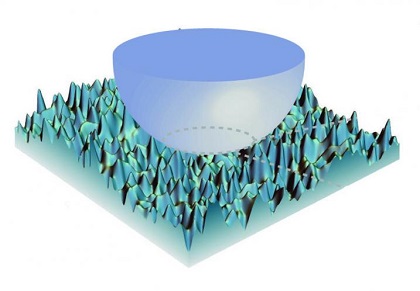
The engineers found that at the smallest of scales adhesive forces known as van der Waals forces exist. Kesari, who is also an assistant professor in Brown's School of Engineering, explained in a press statement:
“At the sub-micron scales, the adhesive forces become dominant, while the force due to gravity is essentially meaningless by comparison. That is why small insects like flies and ants can scale walls and ceiling with no problem. So from a practical perspective, if we want to engineer at those scales, we need a more complete theory of how adhesive forces deform and shape material surfaces, and coupled with surface roughness affect how surfaces stick to, and slip over one another.”
The research has been a decade in the making. Kesari has spent this time bringing solids together and pulling them apart while measuring their atomic force with an atomic force microscope (AFM) apparatus. They determined their findings during practical experiments, as is detailed in the press release:
“An AFM is a bit like a tiny record player. A cantilever with a small needle hanging from one end is dragged across a surface. By measuring how much the cantilever jiggles up and down, researchers can map out the physical features of a surface. For Kesari’s experiments, he modified the setup slightly. He replaced the needle with a tiny glass bead and used the cantilever to simply raise and lower the bead — bringing it into contact with a substrate and then pulling it back off over and over again. The substrate was of PDMS, a squishy polymer material often used in microscale engineered systems. The cantilever measured the forces that the two surfaces exerted on each other.”
In the experiment, when they brought the bead and the substrate in the closest proximity of each other without touching, the researchers found an attractive force between the two. When they eventually touched, the researchers observed that the two materials were trying to push each other away. What was surprising in this experiment, was the cantilever positioning.
Kesari says that he has not seen any literature to corroborate what he found. He showed that the amount of attractive force between the bean and the PDMS substrate was different depending on whether the cantilever was on its way up or on its way down.
Kesari is the first to uncover that it was surface roughness that played a part in the nanoscale makeup of materials that are in nanoscale proximity of each other. Through his experiments, a broader understanding of adhesion in nanoscale is possible. Explaining how this can be applied to the engineering industries at large, the press release the university put out quoted Kesari:
“For instance, he says, a full understanding of adhesion is helpful in designing micro-electro-mechanical systems - devices with micro- and nanoscale moving parts. Without properly accounting for how those tiny parts may stick and unstick, they may easily grind themselves to pieces. Another application could be using nanoscale patterning of surfaces. It might be possible to use nano-patterned surfaces to make solar panels that resist a build-up of dust, which robs them of their efficiency.”
Works Cited
Brownuniversity. “Research Details Sticky Situations at the Nanoscale.” EurekAlert!, www.eurekalert.org/pub_releases/2019-02/bu-rds020719.php.
University, Brown. “Sticky Situations Discovered in Nanoscale Engineering.” Research & Development, 11 Feb. 2019, www.rdmag.com/news/2019/02/sticky-situations-discovered-nanoscale-engineering.
- Details
- Written by: Quintus Potgieter
- Category: Student Stories
Mildred Nanono is a Control and Instrumentation Engineer at the Nalubaale and Kiira Power Stations, maintained and operated by Eskom Uganda Limited (EUL). She is using her engineering skills in hydropower generation. She says:
"I joined Eskom Uganda as a graduate Electrical Engineer trainee. While working towards graduation, I gained experience in both high voltage and low voltage hydropower plant systems. Currently, I am specializing in control and instrumentation with a special interest in distributed control systems and electronic governors.”
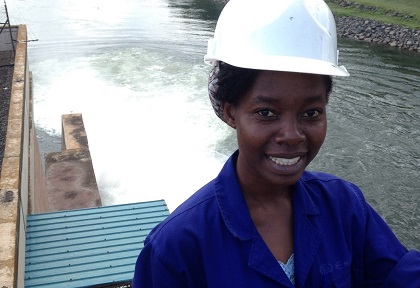
But to understand how she got to this point, we have to go back. She started her engineering career at Nabisunsa Girls School in Kampala, Uganda. Upon graduating high school - and excelling at science - she decided to pursue tertiary, joining Makerere University for a four-year Bachelor of Science in Electrical Engineering course.
Upon graduating, Mildred decided that she would acquire her Master of Engineering (Industrial Automation) from the Engineering Institute of Technology.
"I am grateful for EUL for having sponsored my Master's course. I have gained a lot of knowledge from the lecturers and the group of experienced classmates. This has boosted my performance at work as I have gained a global view of the automation sector, and I am now better placed to make technical decisions in my day to day work.”
Mildred chose to work in the industry due to her admiration for power generation for Uganda. She notes that the hydropower sector, and specifically at the power stations she works in, provide the nation with 40% of its power.
"I had always wanted to be part of a team, contributing to the power sector. Given the small number of ladies in the sector, I was motivated to join the male-dominated field to make my contribution toward national development.”
Mildred is aptly keeping her skills relevant to the industry due to the level of automation making its way into the industry. She is the system and maintenance engineer, working with the instrumentation in the two power stations. She is in charge of planning system life, purchasing required spares, developing maintenance strategies, carrying out required modifications and looking through the thermal-graphic surveys of plant equipment. Highly customized software are flooding into the power stations to aptly manage the infrastructure that gives Ugandans their power.
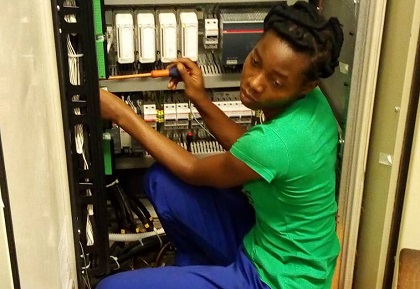
With a demanding job in the industry, and no time to go to a formal brick-and-mortar class, Mildred was happy to find EIT:
“It allowed me to gain knowledge in the most flexible way possible for a busy full-time employee. I was able to study without my employer feeling my absence. My class had experienced students in the automation field who could share real work experiences.”
Mildred notes that the modules covered in EIT’s coursework helped her at her workplace as she was busy with working on an upgrade project for one of the power stations’ distributed control system. She said:
“The technical modules, especially those related to communication, distributed control system and instruments, are very handy for my day to day maintenance and current upgrade projects of the distributed control system and instrumentation systems. I better understand the hydraulic circuits, thus can easily design control systems for them.”
In the next two years, Mildred intends to continue working in the control and instrumentation field but is looking forward to joining the management level in the years to come. In short, she's dedicated to working but is also ready to become a boss lady.
- Details
- Written by: Quintus Potgieter
- Category: Developments
The progressive left and the hardline right: The United States' seemingly endless political stalemate seems to set the tone for how issues are discussed around the globe. And this conversation has extended into the world of electricity generation.
The discussion on the types of energy producing technologies America should employ has reached a peak with the release of a bill called the Green New Deal. Certain Democrats are trying to pass it through Congress.
The legislation's most prominent proponent and co-author is former bartender-turned Congresswoman Alexandra Ocasio-Cortez (AOC).
The resolution aims to meet ‘100 percent of the power demand in the United States through clean, renewable, and zero-emission energy sources’. However, it does not seem to indicate which technologies would be preferable.

Mike Shellenberger, the president of an organization called Environmental Progress, says America faces challenges in the renewables space that nobody is admitting to in the mainstream discussion. He says solar panels and wind turbines are two of the contentious issues plaguing energy debate — especially in California. In a report entitled ‘Why Renewables Can't Save the Planet,' published in Quillette, he writes:
“The first was around land use. Electricity from solar roofs costs about twice as much as electricity from solar farms, but solar and wind farms require huge amounts of land. That, along with the fact that solar and wind farms require long new transmission lines, and are opposed by local communities and conservationists trying to preserve wildlife, particularly birds.
“You can make solar panels cheaper and wind turbines bigger, but you can’t make the sun shine more regularly or the wind blow more reliably. I came to understand the environmental implications of the physics of energy. In order to produce significant amount of electricity from weak energy flows, you just have to spread them over enormous areas. In other words, the trouble with renewables isn’t fundamentally technical -- it’s natural.”
As a result, Shellenberger, and many on the political right in the U.S. point to nuclear power as the ultimate solution to low-emission, abundant electricity generation. However, those on the left seem to be turbo-charged in their refusals and disavowing of nuclear technologies.
Consequently, nuclear only accounts for 10% of the world’s energy demand. Proponents of nuclear say, however, that number should be much higher if the world wants more electricity for more humans. Shellenberger writes:
“A single Coke can’s worth of uranium provides all of the energy that the most gluttonous American or Australian lifestyle requires. At the end of the process, the high-level radioactive waste that nuclear plants produce is the very same Coke can of (used) uranium fuel. The reason nuclear is the best energy from an environmental perspective is because it produces so little waste and none enters the environment as pollution.”
Right-leaning media have asked AOC the question on how exactly she plans to pay for all of the industry-replacing measures she is suggesting the American government takes. This has made those on the more capitalist side worried that if Democratic candidates get closer to winning the presidency in 2020, added aggressive taxation might be imposed to reach the goals the Green New Deal wishes to reach.
Republican-aligned think tank American Action Forum says the Green New Deal's energy reform would cost between US $8.3 trillion to US $12.3 trillion if the country had to meet every requirement set out in the resolution.
The political games played in the energy sector is most destructive to prospective electrical engineers, who are now wondering which area of study is best suited to the future of energy production. Energy politics and mainstream media need to come to a bipartisan consensus so that the engineers of the future are efficiently informed.
Meanwhile, the diversification of the United States’ energy sector is an ongoing process that the world will be studying with a fine tooth comb. As other countries cut down on fossil fuel sources of energy, and implement more renewable sources, the United States looks to be apprehensive of overnight change.
Works Cited
“Representative Alexandria Ocasio-Cortez.” Representative Alexandria Ocasio-Cortez, ocasio-cortez.house.gov/.
“Why Renewables Can't Save the Planet.” Quillette, 1 Mar. 2019, quillette.com/2019/02/27/why-renewables-cant-save-the-planet/.
- Details
- Written by: Quintus Potgieter
- Category: Industry
At the Mobile World Congress 2019, Microsoft came out swinging. They announced the second iteration of their mixed-reality headset, the Microsoft HoloLens. It is aptly named the HoloLens 2.
The new headset will cost US $3,500 but will only be available to companies - and not consumers - for now. The HoloLens is a head-mounted (wearable) technology that integrates 3D virtual elements within the field of view of the wearer.
The HoloLens only weighs 1.25lbs (0.57kg) and fits comfortably on the head. On the back of the wearer's head lies the battery and processor. On the front, a flip-up visor fitted with very sophisticated technology that has been tweaked to give the wearer a wider field of view than its predecessor.
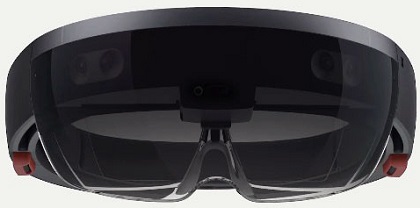
The new display technology in the current HoloLens employes is a novelty designed by Microsoft. Each eye sees a resolution of 2K. The new Lens uses lasers which projects the images onto mirrors that are spinning at 54,000 revolutions per second. The mirrors reflect the images being projected onto a slate of glass placed in front of the eyes of the wearer.
General Manager of Optics Engineering at Microsoft, Zulfi Alam, said: “There’s no competition for the next two or three years that can come close this level of fidelity.”
Equipped for the industrial and education future
Microsoft says for now they are aiming to test the technology with workers in ‘auto shops' and on ‘factory floors' and ‘operating rooms.' Microsoft has partnered up with a company named PTC. The company is at the forefront of digital transformation solutions through its utilization of the Industrial Internet of Things.
The HoloLens can simulate in real time engineering processes that might have taken many weeks and many prototypes later. The HoloLens allows engineers to see 3D CAD software feedback in real time, simulating an engineering process or product without actually having to produce it physically.
On factory floors, preventing downtime is imperative. PTC says that innovative technologies like the Internet of Things and mixed reality (MR) can help manufacturers ‘monitor and service their smart, connected products.’ On their website, they write:
“Industrial IoT data enables manufacturers to monitor the condition of their smart, connected products so they can accurately predict optimal maintenance and service times that will have the least impact on operations.”
On the front of the HoloLens, a spatial mapping sensor scans the room the wearer is in so that it can accurately and proportionately project the 3D objects in augmented reality. This makes it especially useful for engineers who want to see where large machinery will go on a manufacturing floor.
The act of simulating engineering processes and products in mixed reality is particularly noteworthy for its positive spin-offs for engineering education and training in the future. Students and in-training engineers in engineering industries can see learn through the technology to perform practical tasks in real-world scenarios.
Works Cited
Bohn, Dieter. “Microsoft's HoloLens 2: a $3,500 Mixed Reality Headset for the Factory, Not the Living Room.” The Verge, The Verge, 24 Feb. 2019, www.theverge.com/2019/2/24/18235460/microsoft-hololens-2-price-specs-mixed-reality-ar-vr-business-work-features-mwc-2019.
Kaminsky, Greg. “Enhancing the Customer Experience with IoT-Driven Mixed Reality.” PTC, PTC, www.ptc.com/en/thingworx-blog/iot-driven-mixed-reality.
- Details
- Written by: Quintus Potgieter
- Category: Developments
Chinese scientists have developed an unmanned vessel upon which weather rockets will be launched. It is called rocketsonde and was launched from the semi-submersible vehicle (USSV) network built by the Institute of Atmospheric Physics. It is reportedly expected to generate ‘long-term, continuous and real-time marine meteorological measurements, including atmospheric sounding in the lower troposphere.'
The Institute has conducted trials in rivers and seas from May 2016 to November 2017.
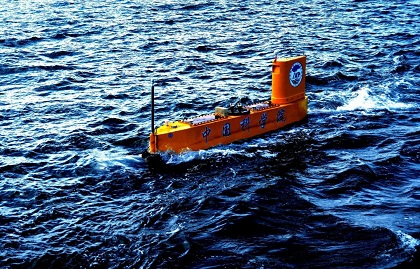
Lead author Hongbin Chen, a professor of atmospheric and marine science at the Institute of Atmospheric Physics, Chinese Academy of Sciences told The Engineers:
“Launched from a long-duration unmanned semi-submersible vehicle, with strong mobility and large coverage of the sea area, rocketsonde can be used under severe sea conditions and will be more economical and applicable in the future.”
Through their tests, they found their submarine and rocket technology could measure ‘sea temperature, vertical profiles of the pressure, temperature [in the air], relative humidity, wind speed, and wind direction.'
Dr. Jun Li, a researcher at the Institute of Atmospheric Physics, CAS also told the Engineer:
“The unmanned semi-submersible vehicle is an ideal platform for marine meteorological environmental monitoring, and the atmospheric profile information provided by rocketsonde launched from this platform can improve the accuracy of numerical weather forecasts at sea and in coastal zones.”
The researchers say that current technologies available for the purpose of producing meteorology and oceanography data are expensive to produce and operate — their approach may make the data much more accessible and drive down the costs of operation. Essentially, they are sending an unmanned submarine with a rocket on it out to sea, launching the rocket, and generating weather and atmospheric data. Engineering never fails to disappoint!
The researchers are now developing more USSVs and are looking to fit them with all sorts of sensors on them that can generate data on a plethora of marine science. All of these cost-friendly alternatives to the expensive technologies running today, according to the researchers, will produce ‘higher-resolution observations’ of the ocean for an extended duration of time. Their current USSV prototype is detailed in their journal:
“The vessel has a dry weight (with fuel) of 6200kg and carries a payload capacity of 300kg for an automatic weather station (AWS) in addition to computers, METOC sensors, sounding rockets and camera equipment. The USSV is powered by a diesel engine, and it was designed to be continuously operated for 10 days before retrieving the vessel for refueling and resting.”
The atmospheric measurements taken of the marine atmospheric boundary layer (MABL) will help determine the formation of high-impact weather patterns that produce typhoons and the like. Historically, it would be hard to measure the MABL due to safety considerations, but with an unmanned vehicle fitted with low-cost technologies, it could revolutionize the measuring of the MABL.
As climate science becomes more and more important, observations from the atmosphere above the world’s oceans will become crucial data to governments and meteorologists all around the world.
Works Cited
“China Launches World's First Robot Ship for Sounding Rockets.” Press Release - Digital Journal, 3 Feb. 2019, www.digitaljournal.com/tech-and-science/science/china-launches-world-s-first-robot-ship-for-sounding-rockets/article/542395.
“Weather Rocket Launched from Unmanned Chinese Vessel in World First.” The Engineer, 1 Feb. 2019, www.theengineer.co.uk/weather-rocket-unmanned-chinese-vessel/.
- Details
- Written by: Quintus Potgieter
- Category: Announcements
Carol Moverley and Alison Brown have been at the helm of the Engineering Institute of Technology’s (EIT) branch in the United Kingdom for the last twenty years. Their story not only details how technology has impacted on education and training over the years, but how the company itself has adapted and grown. They certainly did not join the Engineering Institute of Technology that we know today.
Carol and Alison joined one of the initial iterations of the company – Instrument Data Communications (IDC). This was back in 1999 when they responded to job classifieds that had been placed in Worcester Park.
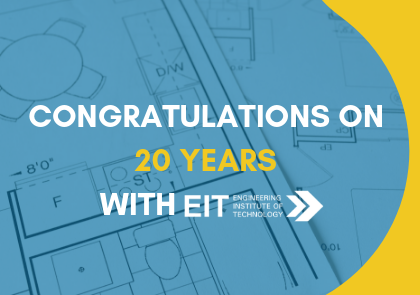
The company originally hosted 2-day public training courses, for professional development in engineering, around the United Kingdom, Ireland and the world. IDC instructors also went on-site to present the short courses - often customised for the client - and this still remains a vibrant part of the business today. To accompany the courses IDC published popular technical manuals.
Carol and Alison began in an age before social media so, in order to get the IDC word out to the engineering world, the marketing entailed direct mail. Delegates who were interested in registering for courses would have to send a paper booking form either by post or fax!
The arrival of the Internet set the stage for EIT: it was the advent of the company’s virtual classroom with live, interactive training and education dedicated to engineering and technology. Carol Moverley said:
“The creation of EIT marked a significant change in the IDC/EIT story. With the collapse of the financial markets in 2008 companies were all tightening their belts, so the creation of EIT gave companies an alternative to sending delegates away to attend public classroom-style training. It took a number of companies some time to recognise the benefits of live, interactive training, but as EIT gained international accreditation for more of its courses, more companies accepted this cutting edge way of providing training.”
As technology continued to develop and EIT began to gain more accreditation around the globe and with a growing number of courses and qualifications across the vocational and higher education sectors, the prospects for IDC/EIT began to gather steam. Alison Brown said:
“IDC/EIT feels like an ever-growing family. The work is varied: there are always new challenges and new technologies which keep the job fresh and exciting. The company is always moving forward with new developments, a couple of the newest – to offer an alternative to the online model - campuses in Perth and Melbourne, for engineering bachelor and master degrees.”
As the institution has developed so have Carol and Alison’s careers. The ease of modern communication has led to a flood of inquiries from individuals wanting to study and train through EIT - and Carol and Alison have been on the forefront of dealing with these prospective engineers. Carol and Alison know they are not the only ones learning; they are gratified to witness EIT students ably engaging in the new learning paradigm of online education. Alison notes:
“Engineers by nature have to learn new concepts and technologies in order to develop their careers and keep up with progress within the industry.”
Dean of Engineering and Founder at the Engineering Institute of Technology, Steve Mackay, lauded the two ladies:
“I congratulate Carol and Alison in our London office and thank them for their incredible service over these eventful 20 years. They are both extremely dedicated and enthusiastic and despite the years this has not waned. They have always risen to the challenge and found ways to navigate past the frequent obstacles. They are loyal and they are stalwarts - constantly looking for ways to improve our offerings despite the huge distances separating them from our head office in Australia.”
Alison and Carol note that their spare time is spent with family and friends. They also look forward to the holidays when they can kick their shoes off and put their feet up, but knowing that they have been integral players in the success of the Engineering Institute of Technology.
Blog - Steve Mackay
EIT's Technical Director, Steve Mackay, enjoys keeping his blog up-to-date with useful tips and current industry matters for his fellow colleagues. He has a loyal and expanding following base reaching over 300,000 people around the world.
Student Stories
In this section you have the opportunity to read and listen to EIT students talking about the reality of the programs. Discussions are wide-ranging and include information about the study commitment required, the value of the qualification in their careers, the relevance of the subject matter, future pathways, and more. They provide valuable feedback for you to take into account before you decide to join one of our programs.
Career Information
Latest career information including industry research, podcasts, blogs, life hacks and general information about how you can make the most out of your career.
Education
Here you will find out more about the latest trends and developments within education worldwide, along with some helpful articles regarding study tips and keeping on track with your studies.
Developments
The latest innovation and inventions from the world of engineering can be found here. Learn about advances in technology and how they can make a real difference within your industry.
Announcements
Keep up to date with the latest announcements from the Engineering Institute of Technology. In this section you can read more about new courses, new recognition from professional bodies, our Excellence in Teaching Award, upcoming free webinars and much more.
Monthly Update
We understand that you may not have time to read all the articles that we post, so our monthly update gives you access to some fascinating articles which cover the best of the months news in a compact format.
Engineering Resources
The key objective of the Engineering Institute of Technology is to provide outstanding practical engineering and technology education. Together with several industry and educational partners we gladly share the following resources and information to assist you along your professional development path. Please note that some of the articles will open a new internet browser tab and redirect you to other partner websites.
